

Issue 7 | July/August 2021 AFM // TURBO RESTRICTIONS p4 FEATURES // EUROSTOXX 50 TROUBLES p18 PEOPLE // SG NEW GM LINEUP p36 @SRP_Insider
SRPInsight
ON THE REGULATOR’S RADAR






The Application Programming Interface (API), is a web-based software application which allows clients to access our data in a controlled manner & integrate it using their own software packages & systems.
Retrieve.

• Download real time SRP data directly to excel
• Receive market share on each asset class/payoff for each company of interest
Interrogate.
• Monitor & increase your market share
• Carry out accurate trend analysis with comprenhensive product data spanning over 15 years in seconds
Incorporate.
• Import data directly into in-house systems/platforms and interrogate the data and risk more effectively
• Combine data sets with other products and visualise it in the context of the larger business


Amelie Labbé, Pablo Conde, Lavanya Nair, Summer Wang, Marc Wolterink

Paul Pancham
Monique Kimona Bonnick
Reihaneh Fakhari
If you are interested in having a similar bespoke report produced for your organisation, please
Reihaneh Fakhari
T: +44 (0)20 7779 8220
M: +44 (0)79 8075 6761
E: Reihaneh@structuredretail products.com
REPRINT POLICY:
SRP’s Reprint Policy: Articles published by SRP can be sent to sources for reference and for internal use only (including intranet posting and internal distribution). If an article is to be shared with a third party or re-published on a public website (i.e. a location on the World Wide Web that is accessible by anyone with a web browser and access to the internet), SRP offers reprints, PDFs of articles or advertisements, and the licensing to republish any content published on the SRP website. Prices vary depending on size, quantity and any additional requirements. To request authorisation to republish any Q&A, profile or feature published by SRP, please contact: info@structuredretailproducts.com
Front cover image: Stefan Widua/Unsplash
3 www.structuredretailproducts.com SRPInsight CONTENTS Contents News Europe 4 News Americas 8 News Apac 12 Personality of the Year Apac 16 Feature: Eurostoxx 50 18 Buy side View: Kepler Cheveraux 22 Feature: DJIA 24 Q&A: Leonteq 26 Q&A: SG South Korea 28 Q&A: Simon Markets 30 Product wrap 32 People moves 35
AFM announces turbo restrictions
The Dutch regulator is looking to provide better protection for retail investors against the risks of turbos.
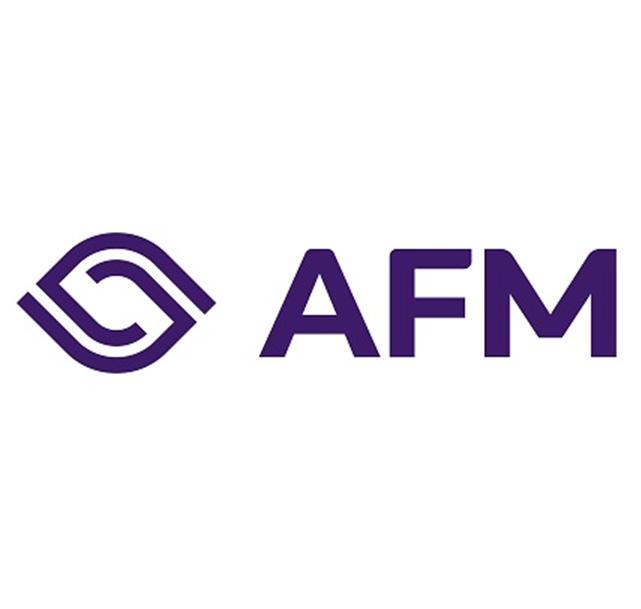
The Authority for the Financial Markets (AFM) has announced new restrictions on the offering of turbos to Dutch retail investors.
From 1 October 2021, there will be a leverage limitation, a mandatory risk warning and a prohibition on bonuses for trading turbos.
The restrictions will apply to the offering of all turbos in the Netherlands, regardless of the member state in which the issuer is located.
According to the AFM, investors use turbos to speculate that the price of a share, index or FX rate will rise or fall. Since the underlying is largely funded with borrowed money, there is a risk that investors lose their entire investment and to reduce this risk, the regulator has decided to impose leverage limitations.
Providers of turbos will also have to add a mandatory warning to the information they provide, stating a standard or company-specific loss percentage. With this measure, the AFM aims to offset the tendency of providers to highlight the potential profits over losses, which will help investors to make better-informed decision.
The watchdog has also imposed a prohibition on bonuses to counter
‘perverse incentives’. Providers are no longer allowed to offer benefits of any kind to convince investors to trade or increase their trading in turbos.
‘Such bonuses divert attention from the risky nature of turbos […] they may also attract retail investors who otherwise would not choose to trade in turbos,’ the AFM stated.
A previous study by the regulator revealed that a large majority of investors have lost money when investing in turbos, with an average loss per client of more than €2,600.
As a result of its research the AFM started consulting the industry on proposed measures to protect retail investors against the risks of turbos at the end of last year. The regulator received 33 responses to the consultation, including 15 submitted by financial institutions and trade bodies.
INVESTOR PROTECTION
In the consultation document, which is now published, the AFM explained why it believes that there are significant reasons for concern about investor protection.
In determining those reasons, it has taken into account the degree of complexity, transparency and specific attributes or components of turbos; the magnitude of potential adverse effects and the existence and degree of discrepancy between the expected return or expected profit for investors
and the risk of loss of turbos; the type of client involved and the level of innovation of turbos; and the sales practices associated with turbos.
The objections that were put forward by some of the consulted parties failed to take away the regulator’s reasons for concern about investor protection. The AFM points out that although the marketing, distribution and sale of turbos is restricted, there is no prohibition. Retail investors will still have access to turbos after the Decree comes into effect.
It is not the first time the regulator has called on the turbo industry to come up with its own solutions. Although this call has led to various proposals, it did not result in a solution that was broadly supported by market parties.
A widely supported solution did not emerge in the responses to the consultation either. Examples of proposals from the industry included improving the provision of information and simplifying the product range. According to the AFM, the former does not affect the characteristics of turbos and the associated complexity and risks. The proposed simplifications of the product range do not sufficiently address the risks of turbos, such as, for example, the risk resulting from the leverage effect. Even though the proposals mentioned can improve investor protection, they do not remove significant investor protection concerns, the regulator said.
Bonuses divert attention from the risky nature of turbos
4 www.structuredretailproducts.com NEWS | EUROPE
FSMA bans 12 structured products, detects KID shortcomings
The Belgian regulator deemed 12 structured products linked to proprietary indices ‘too complex’ for retail investors in 2020.
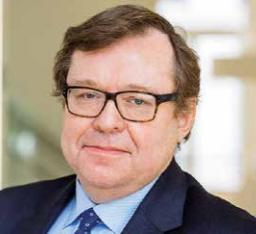
The Financial Services and Markets Authority (FSMA) has said that 12 of the analysed 38 structured products with new features during 2020 did not meet the criteria of the moratorium and as such were ‘particularly complex’. As such, these products were not sold in the retail market, according to the FSMA’s annual report.
The calculation formula of the products that were prohibited in 2020 was often determined because of so-called proprietary (or house) indices – and in the context of that analysis, the FSMA examined the accessibility of 28 new proprietary indices.
The moratorium, which is endorsed by almost all providers of structured products in Belgium, sets several criteria – including the accessibility of the underlying – to avoid the commercialisation of overly complex structured products. In addition, it aims to provide investors with a better understanding of the costs, credit risk and market value of structured products.
Ten years ago, when the regulator started a moratorium on complex structured products, the number of complaints about investment advice fell dramatically, according to FSMA chairman Jean-Paul Servais (pictured).
‘We have banned a number of products that are unsuitable for ordinary investors from the Belgian market,’ he said.
Since the launch of the moratorium in 2011, 5,756 structured products have been commercialised in Belgium. Of these, 2,990 products worth a combined €55.2 billion, are covered by the moratorium. The remaining 2,766 products are issued under the optout regime that allows distributors not to apply the moratorium to investors holding at least €500,000 in deposits and financial instruments at that institution.
Most structured products in the Belgian market provide full or 90% repayment of the investment at maturity so […] ‘investors know they are protected against such market movements,’ the regulator added.
Despite the uncertainty in the financial markets in 2020, the trend to launch products that preserve at least 90% of the capital invested at maturity (both by sales and issuance) continued. In the second half of 2020, volumes invested in partially capital-protected structured products (minimum 90%) were higher than those invested in products that return 100% of the nominal at maturity.
We have banned a number of products that are unsuitable
The amounts invested by Belgian investors in structured products, especially in structured funds, fell sharply in 2020, according to the FSMA. This is confirmed by SRP’s own data, which registered sales of €3.3 billion collected from 212 products in 2020 compared to €4.6 billion (from 296 products) the previous year.
The trend to use proprietary indices has been visible since 2013 (with the exception of 2018 and 2019) and in 2020 was even sharper: by sales volume, approximately half of the structured products issued was linked to a proprietary index in Q4 2020.
One of the consequences of joining the moratorium is that distributors refrain from offering structured products with features or barriers that could expose investors to significant losses in volatile markets, the FSMA stated in its review.
In 2020, the FSMA also carried out a thematic check on a sample of key information documents (KIDs). The check was related to KIDs for several structured products and for several insurance-based investment products. The audit showed that most reported KIDs had deficiencies and the regulator is in the process of providing feedback and explain some of the main shortcomings.
The regulator received 254 applications from KIDs for packaged retail investment products in 2020. The lion’s share concerned KIDs for structured products (158). The applications came from the Grand Duchy of Luxembourg (84), Belgium (64), Ireland (30), the UK (27), France (18), Germany (18), Switzerland (nine) and the United States (four).
5 www.structuredretailproducts.com NEWS | EUROPE SRPInsight
EU markets on the up, but rates and CLNs lose traction
Turnover in investment and leverage products on reporting European financial markets totalled €43 billion in the first quarter of 2021, up on a quarterly basis.

Open interest across reporting markets stood at €293.5 billion, according to the European Structured Investment Products Association (Eusipa).
Turnover across European exchanges increased by 23% quarter-on-quarter but dropped 13% year-on-year.
First quarter turnover in investment products on European trading venues amounted to €18 billion, 42% of the total traded volume. Investment product turnover increased by 40% on a quarterby-quarter basis, while remaining largely
stable compared with Q1 2020. Turnover in leverage products including warrants, knock-out warrants and constant leverage certificates reached €25 billion in the period from January to March, representing 58% of total turnover.
“Markets seem to have by and large recovered from the pandemic, and overall — at least at the structured notes end — have proven their resilience. Numbers are now back to where they stood a year ago,” Thomas Wulf (pictured), secretary general at Eusipa, told SRP.
Turnover in leverage products decreased 21% year-on-year and rose 13% from Q4 2020.
At the end of March, trading venues located in reporting Eusipa markets were offering 436,586 investment products and 1,331,678 leverage products, a five percent increase on a quarterly basis in the number of listed products available and 16% on the previous year.
Banks issued 1,378,261 new investment and leverage products in the first quarter
of 2021, a figure comparable to the previous quarter, but down 22% yearon-year. In total, 150,137 new investment products were launched, accounting for 11% of new issues; the 1,228,124 new leverage products represent 89% of the total. There were 27% fewer investment products launched than in the same quarter of 2020.
On the leverage products side, issuance rose by four percent from Q4 2020, but decreased 21% on an annual basis.
For Austria, Belgium, Germany and Switzerland, the market volume of investment and leverage products issued as securities stood at €293.5 billion at the end of the first quarter, a four percent increase quarter-on-quarter.
At the end of March, the market volume of investment products increased to €283 billion – up four percent quarter on quarter and 19% year on year. The outstanding volume of leverage products totalled €10.5 billion at the end of March. This represents an 11% decrease on a year-on-year basis.
UK gov mulls Priips ‘successor’ regulation, extends Ucits KID exemption
The UK HM Treasury has announced a five-year extension of the current exemption for Undertakings for the Collective Investment in Transferable Securities (Ucits) funds in relation to the requirements of the Priips Regulation. The extension is part of the government’s regulatory divergence with the European Union and includes a review of the UK retail disclosure regime, which will be followed by changes to the Priips Regulation or a successor regulation sooner than 2026. HM Treasury announced in November 2020 it was seeking to improve the functioning of the Priips regime in the UK.
Ucits funds are currently exempt from the requirements of the Priips Regulation which means that, instead of producing a Key Information Document (KID), Ucits funds providers must produce a Key Investor Information Document (KIID), as per the requirements of the Ucits Directive. This exemption is set to expire on 31 December 2021 but with the five-year extension, Ucits funds will not be required to provide a KID until 31 December 2026. The UK government stated that the extension is aimed at providing certainty for industry and investors regarding the disclosures Ucits funds providers will have to make to retail investors beyond the end of 2021. HM Treasury intends to legislate to extend the exemption under a power granted to the Treasury in the Financial Services Act 2021 to extend the current exemption by five years if required.
6 www.structuredretailproducts.com NEWS | EUROPE
HSBC executes first ESG swap with FX hedge on MSCI gauge
The UK bank is leveraging its structuring capabilities to integrate macro-assets on sustainable solutions as they can be ‘quite neutral’ from an ESG perspective.

HSBC executed on 11 June a total return swap based on the performance of the MSCI World ESG Leaders Index for a global liability driven investment manager serving UK pension funds.
The transaction is the first time the MSCI World ESG Leaders Index has been hedged with an FX overlay via a new custom-made index, the MSCI World ESG Leaders 100% hedged to GBP Index, manufactured by the bank for the client.
This is proof that there are opportunities for ESG to be deployed around multidimensional problems, Patrick Kondarjian (pictured), global co-head of ESG sales, markets & securities services, at HBSC, told SRP.
“Some clients are seeking to switch from traditional global index benchmarks to their ESG versions with systematic FX hedging embedded into the index themselves,” he said. “The message here is that we can embed ESG wherever it is needed to achieve the client’s goal.”
The total return swap linked to the index will see the client pay HSBC the SONIA rate, compounded daily, at maturity of the swap in July 2022 in exchange for the price
return of the MSCI World ESG Leaders 100% hedged to GBP Index. The 13 current currencies of its constituent stocks are hedged by HSBC to GBP, using one-month rolling forward exchange rates. The index, which is rebalanced monthly by MSCI, tracks the performance of these forward hedges as well as the underlying equities of the MSCI World ESG Leaders Index.
According to Kondarjian, FX is an area of interest in the ESG space as macro assets can fit in a green bond wrapper and can be quite neutral from an ESG perspective.
“Because ESG is multifaceted – some clients look for impact, others for risk mitigation – there is a bespoke element that allows us to leverage on our structuring capabilities,” he said. “By partnering with MSCI in this way, we can offer a transparent and cost-effective way to deliver an investible custom-built solution around a client’s required equity, FX and ESG exposures.”
This is the first time the bank has deployed its global equities, FX and ESG capabilities to build a custom-made index that provides a hedge on the exposure to the index in GBP, said Richard Bibbey, global head of FX, EM rates & commodities at HSBC.
The MSCI World ESG Leaders Index is a capitalisation weighted index that provides exposure to companies globally with high Environmental, Social and Governance (ESG) performance relative to their sector peers. Constituent selection is based on data from MSCI ESG Research.
The index is designed for investors seeking a broad, diversified sustainability benchmark with relatively low tracking error to the underlying equity market.
DDV releases ESG structured product code of conduct
The German Derivatives Association (Deutscher Derivate Verband, or DDV) has published the DDV Sustainable Finance Code of Conduct which set out uniform product and transparency standards for sustainable structured products.
The new guidelines, agreed by the 15 issuers of structured products represented in the association, distinguishes between ESG Products and ESG Impact Products.
In the case of ESG Products, the issuer defines one or more dedicated sustainability strategies in advance for the selection of the underlying; whereas ESG Impact Products are impact-focused bonds that ‘pursue one or more measurable sustainability objectives’ such as funding economic activities that contribute to the defined sustainability objectives.
For both ESG Products and ESG Impact Products, issuers will need to state which sustainability standard they follow (eg the UN Principles for Responsible Banking, the UN Global Compact, or other equivalent principles). This also applies to basic products - issuers take the principles of the UN Global Compact into account as well, but the products are not classified as sustainable.
‘Only ESG Products and ESG Impact Products are labelled as sustainable and carry a common logo,’ said Dr Henning Bergmann, CEO and member of the board of directors of the DDV. ‘Our goal is to ensure that a variety of sustainable structured products are available to them [and to] provide transparency and reliability for sustainable investment in structured products, and thus create trust in the market.’
7 www.structuredretailproducts.com NEWS | EUROPE SRPInsight
US start-up onboards ratings for indexed annuities
The firm is seeking to capitalise on increasing demand and availability of indexed annuities in the US market.

The Index Standard, which provides index rating and forecasting services, has announced coverage of standard and risk control indices built into fixed-income annuities (FIAs) and registered index linked annuities (Rilas).
The ratings system is the first of its kind and will cover 150 indices used in the FIA and Rila markets, as well as benchmarks underlying selected exchange-traded funds (ETFs) that have also been deployed in the US retirement space.
“Fixed-index annuities were a natural market for The Index Standard, as they are simultaneously gaining a larger foothold while their complexities—and the mechanics of the indices they rely upon—are still largely misunderstood,” Laurence Black (pictured), founder of the Index Standard, told SRP.
“With the expectation that fiduciary and best interest regulations will be
strengthened, the ratings can also assist in substantiating advisors’ recommendations in these areas.”
The web-based platform was launched in August 2020 in response to the growing need to bridge the gap in awareness and to help investors to keep abreast of the countless volume of indices that exist in today’s financial markets.
Each index is judged according to about 30 different qualitative and quantitative characteristics such as robustness and individual methodology. Updated forecasts will also equip investors and advisers with knowledge on expected returns. This will enable them to make informed decisions going forward.
Adding to the rating and forecast of ETFs, FIA products are the initial sector of focus for The Index Standard, which is leveraging its seasoned team’s 40 years of experience in index construction and design.
Through its subscription service, the firm plans to launch additional evaluation for more complex index products - the newly available ratings will aid in contextualising
the selection of more sophisticated risk control indices within FIAs.
The platform makes use of proprietary methodology and an evaluation process that employs seven different criteria including efficiency, returns, and capital at risk.
According to Black, the level of index complexity has increased in the industry with there being over three million indices and counting. Therefore, it is becoming harder for the average adviser or agent to decode these indices.
“What you really want is diversification and different asset classes, factors, and give that client a good outcome at the end. That is where products such as custom risk control indices come in and they can provide this. However, there is a misperception about some of these risk control indices that they are over engineered and potentially have high fees,” he said.
“Not many people are aware of the time, effort, and due diligence that banks put into index products. This is what we’re trying to highlight, and our index ratings are helping to bring transparency.”
Ratings can assist in substantiating advisors’ recommendations
8 www.structuredretailproducts.com NEWS: AMERICAS
Desjardins enters capital at risk space
The Canadian bank is expanding its offering to allow clients access to a diversified range of both global and US-centred equities.

Desjardins has added a new set of products to its existing suite of capital protected notes which include the Desjardins Contingent Coupon Notes (Maturity-Monitored Barrier), Travel and Leisure Equities, Series 1, Fixed Coupon Notes (Maturity-Monitored Barrier), US Market, Series 4, F-Class, and Desjardins Fixed Coupon Notes (Maturity-Monitored Barrier), US Market, Series 3.
All three income notes feature longer tenors of five to six years with Series 1 offering exposure to a reference portfolio comprised of equity securities of both
Canadian and US firms operating in the travel and leisure industry.
The notes offer contingent principal protection in the event of a slight-tomoderate decline in the reference portfolio performance.
According to Dominic Laurin (pictured) market-linked product manager at Desjardins, various sectors such as hotels, restaurants, travel, and entertainment should experience a rebound in the next few years as the economic recovery intensifies.
“The economic recovery should [happen] all around the word in a progressive manner corresponding to vaccine advancement. So, as the vaccination program accelerates, we should be able to observe an economic recovery which could be beneficial for certain sectors which have suffered most in the last months,” said Laurin.
The bank recently launched the ‘Opportunity Guaranteed Investment – Travel and Leisure,’ a six-year market-
linked investment which strives to meet investor expectations and offers the potential of companies impacted by the Covid-19 pandemic that are expected to benefit from growth brought about by the resumption of travel and leisure activities.
The move to expand the offering responds to a shift from Canadian underlyings to global markets which provided an opportunity to develop unique structured products around securities that were commonly used during the pandemic, according to Laurin.
The focus of this revolved around sectors including communications and consumer staples. Telecommunications also experienced a significant increase in demand due to the sudden move to a remote workforce.
“Desjardins was the first and the only Canadian institution to have offered such a product as the Opportunity Guaranteed Investment – Changing Consumer Needs. This product offered some well-known companies such FedEx, Netflix, Amazon. com, and BCE, to name a few,” said Laurin.
S&P DJI Launches Dividend Growers Index Series
S&P Dow Jones Indices (S&P DJI) has launched the S&P Dividend Growers Index Series, which includes the S&P US Dividend Growers Index and the S&P Global Ex-US Dividend Growers Index.
The S&P US Dividend Growers Index and the S&P Global Ex-U.S. Dividend Growers Index respectively use the S&P United States BMI and the S&P Global Ex-US BMI as the starting universe for stock selection. The two indices measure the performance of companies that have followed a policy of consistently increasing dividends every year for a specified number of years.
The indices are subject to an indicated annual dividend yield exclusion, omitting the top 25% highest ranked eligible companies from the index universe. To reduce excessive turnover, existing constituents are removed from the index if they are in the top 15% by dividend yield. Constituents are float-adjusted market capitalization (FMC) weighted, subject to a single constituent weight cap of 4%.
The index series attempts to ensure high capacity and tradability by rebalancing over a period of three days compared to the standard single day rebalance in most equity indices.
9 www.structuredretailproducts.com SRPInsight NEWS: AMERICAS
BMO cashes in on synthetic dividends
The Canadian bank has recently shifted its focus to volatility control and risk diversification amid a strategy shake up aimed at bringing clients greater flexibility and as well as more asset selections.

Jerome Cloutier (pictured), managing director and co-head global distribution cross asset solutions at Bank of Montreal (BMO) highlights the bank’s shift towards synthetic dividend underlyings over the past year, upholding it as the bank’s differentiating factor in the market.
“We pivoted towards strategies that are focused on synthetic dividends, and volatility control. That’s something that we really focused on because we wanted to bring something different in our issuance model,” said Cloutier.
BMO has established a partnership with leading index provider Solactive to deploy
new synthetic dividend strategies that would reward the investor for the added complexity of the strategy versus a plain vanilla index or stock basket.
“We’ve really led the way in terms of rolling out these types of strategies and spearheading the market in terms of advisor adoption and education,” he said.
The Canadian bank has marketed over 50 structured notes year to date linked to decrement or synthetic dividends indices with the Solactive United States Big Banks AR index taking the lion’s share on the back of 54 new issuances.
SRP data also shows that BMO saw a spike in the volume of products tied to the Solactive Canada Bank 30 AR Index – another decrement index, during the first half of 2021, compared with the same period a year prior; and introduced the Solactive Canadian Large-Cap 60 AR Index to retail investors earlier this year. During the first half of 2020, banking reigned as the category with the highest level of interest - currently, the dividend sector is the most soughtafter underlying sector across BMO’s structured product issuance.
However, the demand in the private banking sector has always been quite strong and does not detect that there’s been a particular shift.
“Structured products are a part of broader portfolio diversification and there’s no reason why high net worth and ultra-high net worth, wouldn’t be interested in these types of strategies,” said Cloutier.
The most recent product issued by the bank is the BMO AutoCallable Notes, Series 1689 (CAD), Solactive Canada Bank 30 AR Index. The seven-year growth note struck on 31 May and features a reverse convertible payoff type.
Cloutier noted that BMO has had a good run so far this year supported by growing equity markets.
“At the market level, the equity markets have been very strong, which led to a lot of notes being called,” he said. “Because of that, we’re rolling these notes into new notes, so that’s the knock-on effect of a very strong market. However, net new sales volumes are also incredibly strong.”
Ninepoint Capital Partners has rolled out a new addition to its liquid alternative product offering
The firm’s Alternative Credit Opportunities Fund aims to deliver income as well as capital protection through a hybrid of global securities that will include structured notes, convertible bonds and preferred shares. The fund may also introduce leverage through the use of derivatives of which its exposure will not exceed 300% of its net asset value calculated daily.
“Aside from liquidity the challenge with structured notes is finding an offering that suits your portfolio needs or view at a price that is in line with what you might be able to reproduce yourself,” he said. “In a situation where a counterparty is off setting a trade or balance sheet risk, they can be very compelling.”
10 www.structuredretailproducts.com NEWS: AMERICAS
According to Mark Wisniewski (pictured), partner and senior portfolio manager at Ninepoint, structured notes are just one of the components that it considers when looking at this fund, while the firm is open minded in its approach to credit.
Fidelity sees jump on prop income plays
The financial services corporation has increased its profile in the structured products industry as a provider of custom strategies to the indexed annuities market.

The US firm has about 70 proprietary indices with roughly US$80 billion in assets linked to them and has been at the forefront of underlying innovation adding to the range of indices available to structured product investors.
According to Scott O’Reilly (pictured), head of index, sector, thematic & factor products at Fidelity Investments, there has been growing demand in recent years for factor-based indices that help investors get exposure to a particular strategy or investment outcome.
“In particular, against a backdrop of a low interest rate environment, we’ve seen interest in dividend or income-oriented
indices that aim to take advantage of the high dividend yields of dividend paying stocks,” he said.
Given the heightened market volatility, the firm has also seen an interest in indices that dynamically allocate between stocks and bonds to adjust for market conditions as well as a general shift towards increased personalisation, whether a client is shopping online, streaming music, or investing in their portfolio.
“We’ve seen growing interest in strategies that resonate more deeply with investors, such as thematic investing which cuts across traditional style and sector frameworks, and it gives advisors one more way to meet client needs and align with their interests,” said O’Reilly.
The thematic offering includes valuebased ESG strategies offering exposure to clean energy, and specific megatrends, or strategies investing in companies that are driving certain disruptive technologies. The recent demand for indexed annuities and structured products tied to proprietary indices has soared and opened up new opportunities.
“Investors [are] increasingly seeking
investments with more defined outcomes, such as some level of downside protection, particularly after the great financial crisis,” said O’Reilly. “Given this trend, interest in index annuities and structured products has grown, and we believe our indices can help meet the evolving needs of both issuers and customers in this space.”
SRP data shows an increased volume of market-linked notes in the US market tied to the Fidelity Multifactor Yield 5% ER Index. The underlying is is a rules-based index that blends six equity factor indices with US Treasuries and uses a dynamic allocation approach to reduce volatility and deliver more consistent returns over time. The most recently issued registered note was rolled out by Citigroup Global Markets and features an uncapped call payoff type. The growth product has a strike date of 25 May 2021 and will reach maturity in six years.
There is also an index annuity launched by Lincoln Financial in 2019 linked to the Fidelity AIM Dividend Index, a rulesbased index that utilizes a dynamic asset allocation approach that blends the characteristics of high dividend stocks with US Treasuries, which may reduce volatility and deliver a steadier ride over time.
Barclays rolls out ‘dynamic allocation’ gold ETNs
Barclays Bank has launched the Pacer iPath Gold Trendpilot ETNs which tracks the performance of the Pacer Barclays Gold Trendpilot Total Return Index. The index is calculated on a total return basis and is intended to reflect the performance over time of a dynamic allocation strategy by taking 100%, 50% or 0% notional exposure to the Barclays Gold 3 Month Deferred Index Excess Return on a daily basis based on three specified signals that reference the short-term and long-term performance of the Gold Index and the return that corresponds to the weekly announced interest rate for specified 3-month US Treasury bills.
The Gold Index is intended to reflect the performance of a rolling position in specified gold futures contracts that will become the first liquid nearby futures contracts three months in the future in accordance with a specified schedule.
‘This could not come at a better time, as we continue to see investor demand for commodities and we believe that the Trendpilot methodology is uniquely positioned to offer risk mitigated access to gold,’ said Shilpa Akella, managing director and head of cross-asset structuring Americas. The ETNs began trading on the NYSE Arca exchange on June 16 and carry an investor fee of 0.65% per annum.
11 www.structuredretailproducts.com SRPInsight NEWS: AMERICAS
Connexor goes live on Contineo as Six kicks off Asia expansion
Six Swiss Exchange’s reference data distribution platform, Connexor, has gone live at Contineo with the aim of “substantially simplify trading flow”.
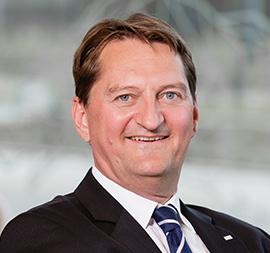
The launch comes nearly four years after the Swiss exchange acquired a 13% stake of Contineo back in December 2017. The Connexor system which was rolled out on 25 May has been
adopted by a few issuers among the founding banks, according to André Buck (pictured), global head sales & relationship management at Six Swiss Exchange.
“We developed the Proof of Concept (PoC) with one trade executed in autumn 2019. It took a bit longer to officially deliver the complete service than expected due to the outbreak Covid-19,” Buck told SRP. “Connexor offers a unique data reference service in Asia that’s not seen elsewhere.”
As risk parameters change during the life cycle of structured products, Connexor is designed to provide the reference data for specialised third parties, which in return analyse end clients’ portfolios or create regulatory documents, said Buck.
Fixed-coupon notes (FCN) is the first structure available with equity-linked notes (ELN), Knockout ELN, accumulator and deccumulators, coming soon.
Connexor has changed its fee model from one-off charge per ISIN (CHF0.25 to CHF2) for non-listed structured products to free access on the premise that the trading data is shared to vendors including Six Financial Information, Bloomberg, Refinitiv and WM Datenservice.
The number of issuers using Connexor reached 41 in 2020. There are currently 70 participants when ‘counting data consumers’ such as exchanges, vendors and specialist third parties. The service posted a record 1.35 million uploads and over 17 million product events in 2020.
Stropro revisits ‘ASX 200’ play as Australian investors hunt for yield
The Australian multi-issuer platform (MIP) has closed the fourth tranche of an ASX 200-linked structured note targeting a fixed return of 6.9% pa. as it sees an ‘exponential level of growth’ in terms of the number of users.
Issued by Société Générale, the nonprincipal protected note offers a downside protection of 35.55% and will be redeemed early if the S&P ASX 200 + dividends – 350 points pa reaches a predefined level. The knockout level steps down at a two-year interval starting at five percent from the third year onwards. The product which requires a minimum investment of AU$20,000 has a tenor of between one and eight years and offers daily liquidity.
Since going live in late 2019, the MIP has distributed 22 tranches of non-principalprotected notes, five out of which have matured early including its fixed-coupon notes (FCNs) which returned between 7.5% and 8% pa. on average.
One of them was linked to a basket of equities comprising Microsoft, Google, Facebook and Apple while another one to a basket of Bank of America, J.P. Morgan, Citibank and Wells Fargo.
Meanwhile, a twin-win note delivered around 21% pa, after six months – the product which was launched in April 2020 tracked the performance of London-listed BHP Group and Rio Tinto,
two Australian mining companies, and paid a coupon of 16% pa.
In December, the Australian fintech launched its first ESG-linked delta-one product - a three-year call warrant linked to the SGI European Green Deal Index, and another tracker note linked to the SG Green America Ahead Index in May. Stropro typically offers one or two new tranches on a monthly basis, and next in the pipeline is the third tranche of delta-one warrant on the Solactive China Electric Vehicle and Battery Index to be issued by Société Générale - the index went live in October 2019 covering 20 EV-related Chinese companies listed in China and Hong Kong SAR.
12 www.structuredretailproducts.com NEWS | APAC
China’s structured deposit issuance falls flat, lower returns expected
Issuance of structured deposits in China is expected to remain flat as suggested by ‘window guidance’ from the regulator which has succeeded in curbing high-yield structures.
Despite the outstanding balance of structured deposits issued by Chinese banks in April picking up to the level seen at the end of 2020, the total balance has gradually dropped to CNY6.55 trillion. This is down 10% from a modest rebound in January or nearly half the record of CNY12.14 trillion seen in April 2020, according to data from People’s Bank of China, the Chinese central bank.
In the meantime, the average expected highest yield, which is a key benchmark for structured deposit performance included in term sheets, has dropped to 3.61% from January to May, lower than the 4.13% recorded in 2020, data from Rong360 shows.
“The overall issuance [of structured deposits] will be low for the rest of the year, [and] possibly even in 2022,” a banker at financial market division of a leading issuer in China, told SRP.
The bank has been instructed ‘not to exceed’ its issuance of 2020 on a yearly basis and ideally keep the monthly issuance lower than that of December 2020. The recommendation is part of the window guidance - a policy by which authorities seek to lower commercial banks’ lending volumes through persuasion – it received from the China Banking Regulatory Commission in January.
Structured deposits balance at state-owned Chinese banks (CNY100m)
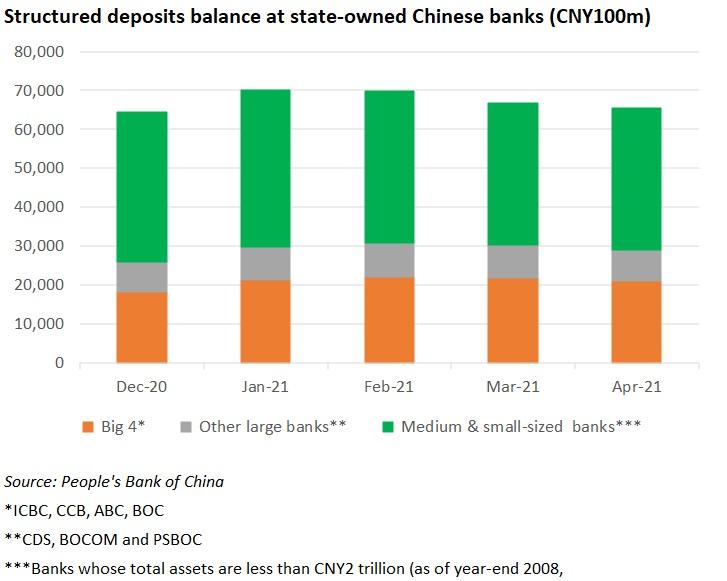
Small and medium Chinese banks, the main issuers of structured deposits in the country, were ordered to downsize their balance of structured deposits by the end of 2020 to two-thirds of the level recorded at the end of 2019, as the regulator attempted to ease their debt burden and curb ‘fake structures’. As reported, this group of issuers were able to meet the requirement.
Issuance will be low for the rest of the year
“We’ve no longer seen ‘fake structures’ in the market since the rules came into effect on 18 October,” said the source, pointing to the regulatory framework targeting structured deposits that was announced in 2019. “Real structures bring more uncertainty as their performance is marked to market, [so] the regulators in a way aim to mitigate the risk through issuance limits.”
Reference assets for structured deposits are generally concentrated on FX, equity indices and gold with the CSI 500 index, CSI 300, EUR/USD driving significant activity, according to the source. The bank, which used to be an active issuer of Libor-linked deposits, halted issuance on the interest rate at the end of Q1 2020 – the last such product matured in March 2021.
13 www.structuredretailproducts.com SRPInsight NEWS | APAC
Hang Seng rolls out 2x leveraged Tech plays
Hang Seng Indexes Company has launched the HSTECH 2x Short Index and the HSTECH TR 2x Leveraged Index.
The two new indices are the latest additions to the existing range of indices derived of the Hang Seng TECH Index (HSTECH), which ‘has attracted strong interest from investors since its launch last year,’ according to Hang Seng Indexes.
The new HSTECH 2x Short Index and the HSTECH TR 2x Leveraged Index are, respectively, short and leveraged versions of the HSTECH. The HSTECH 2x Short Index is inversely linked to the daily movements of the HSTECH and provides 2x reverse return; while the HSTECH TR 2x Leveraged Index reflects the 2x amplified return of the HSTECH total return index.
The launch follows new additions to the Hang Seng Smart Beta Index Series with the addition of the Hang Seng China A Smart Beta Single Factor Index Series. Using the Hang Seng China A (Investable) Index as its universe and the Hang Seng Smart Beta framework, the index series is designed to capture exposure to six factors – value, momentum, quality, yield, low volatility and low Size – with a longterm risk premium.
The index provider has also adopted a quality-based methodology which combines a bottom-up quality screening criteria that only includes stocks with top 80% quality scores and a top-down tilting method that adjusts stock weightings by the factor strengths.
Hang Seng Indexes offers two versions of each of the six single factor indexes.
HSBC PB launches e-trading platform for structured products in Apac
The UK private bank is growing its coverage in the Asia Pacific region enabling clients to transact a full range of products online.
HSBC Private Banking has unveiled today (17 June) an online trading platform for cash equities and exchange-traded funds (ETFs) in Asia, which aims to expand to listed structured products and structured notes by next year.
The private placements included in the next stage of the platform’s development will cover equity-linked notes (ELNs), fixedcoupon notes (FCNs), dual currency notes and deposits, FX spot and forwards, noncomplex funds and fixed income while the listed products will be derivative warrants and callable bull bear contracts (CBBCs) traded on the Hong Kong Stock Exchange.
The platform offers HSBC’s private banking clients in Asia access to realtime trading across Hong Kong SAR, China, Singapore, Japan, the Philippines,
Australia, the UK, the US, Germany and France. It currently allows clients to directly invest in cash equities and ETFs from their mobile phones during exchange trading hours in each market with a daily cap at US$10m and up to US$2m per transaction.
HSBC Private Banking is in discussion with an undisclosed fintech company about the incorporation of structured products on the trading platform, a source at the bank told SRP, adding that the bank is aiming at completing the project by the end of the year.
The private bank introduced its multiissuer structured product platform nearly four years ago - the new service will enable investors to construct their own portfolios online beyond the automation of trading process, said the source.
Australian watchdog sees ‘risk of harm’ in crypto ETPs
Asic has sounded the alarm on cryptolinked products following new regulatory crackdowns from the UK, Canada and Japan which have banned digital assets exchange Binance. The Australian Securities and Investment Commission (Asic) is seeking feedback on its proposed good practices for exchange-traded products (ETPs) and other investments tracking crypto assets, including structured products, in a response to rising interest from market participants.
Besides ETFs, ETPs are classified as managed funds and structured products,
which are exchange- traded notes (ETNs) and exchange-traded commodities (ETCs) on the Australian Securities Exchange. Other investment vehicles within the scope of the consultation include listed investment trusts and companies (LICs) as well as unlisted registered managed investment schemes, which are also accessible to retail investors.
The report sets out a series of guidelines to tackle a number of issues including whether crypto assets are appropriate as underlying assets of investment products and can be reliably priced.
14 www.structuredretailproducts.com NEWS | APAC
Phatra Securities eyes offshore equity as issuance back to pre-Covid level
Thailand’s largest issuer has seen its issuance recover to the Q1 20 level as clients reinvested proceeds from selling stocks redeemed from autocallable fixed coupon notes (FCNs) during the March 2020 collapse.

Kiatnakin Phatra Securities (“KKPS”) collected THB3.5 billion (US$112.2m) from 769 structured notes in Q1 21, slightly lower than the THB3.8 billion recorded in Q1 20, translating to a market share of 9.8%. This shows a strong rebound compared with the sales plunge in Q2 20 at THB1.1 billion, SRP data shows. Between April and May, it has raised THB2.4 billion across 456 products.
“Our volume of structured products has been rising from October. We’re nearly back to the normal seen before the [March] crash,” said Nopadon Nimmanpipak (pictured), head of equity and derivatives trading at KKPS.
Most of the issuance are FCNs, which will be paid in shares if the underlying price gets knocked in and falls below the strike level at maturity, such as during the March market collapse. Equity-linked notes (ELNs) and reverse ELNs are also in demand, according to Nimmanpipak.
“When facing a very high market volatility like last year, it’s normal that investors mull or postpone their decision when taking risk,” he told SRP.
The reduced issuance in 2020 is also related to regulatory restrictions surrounding structured product
investment applied to a cooperative client (a type of private business organisation), which resulted in a number of cooperatives retreating from the market, according to Nimmanpipak.
OFFSHORE UNDERLYING
“The majority of our products are linked to onshore underlyings, but the new trend is to use offshore equity underlyings –that market is expected to become much bigger,” Nimmanpipak said. KKPS is on track to expand its offshore reference equity across the US, Hong Kong SAR and Singapore, and plans to debut structured notes with quanto options.
“As offshore investments becomes more affordable and clients get used to allocating their wealth offshore, we’re hopeful to see a larger structured product market,” he said, adding that the trend
benefits from the relaxed regulatory environment.
The Bank of Thailand - the country’s regulator - released in November new measures to bolster outbound investment as part of its roadmap towards a ‘new Thai FX ecosystem’ to capitalise on ‘renewed inflows into emerging market economies, including Thailand’.
The measures include relaxed rules on foreign securities investment, such as increasing the investment cap for retail investors from US$200,000 per year to US$5m per year, and waiving the limit for foreign securities through local financial institutions like brokerage firms and asset management companies. In addition, foreign securities are allowed to be listed in Thailand through vehicles including ETFs that track foreign assets.
Phatra Securities: sales and issuance by quarter
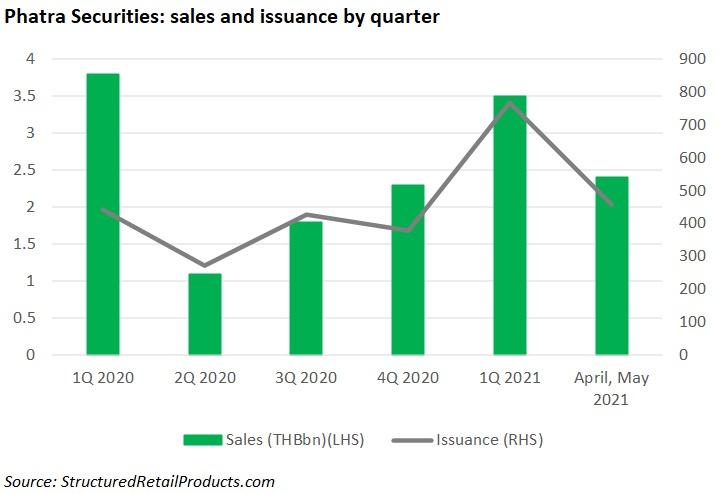
15 www.structuredretailproducts.com SRPInsight NEWS | APAC
SRP ASIA PACIFIC PERSONALITY OF T HE YEAR 2021
Nicolas Rigois
Nicolas Rigois, global head of capital market products and solutions at Standard Chartered Bank (SCB) in Singapore, has won this year’s Personality of the Year award, after securing the most votes from market participants in SRP’s Asia Pacific awards 2021 survey.

Growing up near Paris, Rigois moved to Tokyo as a trader in interest rate derivatives for Société Générale after completing his master’s degree in engineering at Mines Paribas Tech. Rigois’ career trajectory has also taken him to London. As well as SG, he has held senior positions at Credit Suisse and Barclays in London before settling in Singapore as director of private bank sales at Barclays in 2006.
After 12 years with SCB, today Rigois leads a team of 125 bankers serving private banking and retail investors including a dozen structured product specialists in Hong Kong SAR and Singapore.
Under his supervision, the total notional value of structured notes at SCB in Hong Kong SAR and Singapore rose 20% in 2020 year-on-year led by a ‘very strong Q1 20’ – the volume advanced another 12% in Q1 21 quarter-on-quarter.
“The year of 2020 was not ordinary,” he says. “The level of activity in the structured product market in Q1 20 was
16 www.structuredretailproducts.com
extremely high across the industry. Then Covid-19 hit. We recognised that the market hit the bottom in May and quickly acted on what we saw as a potential recovery.”
In Singapore, the UK bank has distributed 3,500 tranches of fixed-coupon notes (FCNs) in Q1 21 for the ‘affluent’ segment, which covers private banking as well as priority and premium retail clients. It accounted for 36.8% of those in 2020, a growth of 47% compared with the average number last year.
GOING WITH THE FLOW
“In a such fast and directional market, the focus was on expressing the core view and keeping implementation simple,” says Rigois, adding that flow products became SCB’s main route to the structured product market in 2020.
“Running a flow business is an art,” he said. “Ultimately, the quality of underlying selection and calibration of features is key. Flow product investors are in tune with underlying market and looking for an efficient way to monetise their views and market volatility.”
Bond-linked notes (BLNs) also remained a focus at SCB throughout 2020 – the bank has offered quarterly tranches of this structure since Q1 20.
“BLNs have caught our clients’ attention because they combine the element of diversification normally associated with funds and the element of tenor normally associated with bonds whilst allowing a level of customisation,” he said.
Rigois attributes the popularity of these products to SCB’s strengths in fixed income investment as the UK bank leverages its footprint to provide onshore fixed income access to major markets in Asia, Africa and the Middle East.
On the equity derivatives side, the UK bank has put the emphasis on payoffs rather than new underlyings, driven by the goal of aligning the offerings with the bank’s investment views.
“For instance, we have introduced products with lookback, outperformance features as well as products that implement rules-based investment strategies,” said Rigois.
NEW TRENDS
SCB is on track to develop ESG-linked structured solutions as sustainable investing gains traction among investors after the outbreak of Covid-19. “Our ambition is to offer ESG solutions as core investments, and have integrated the ESG principles to our flow products starting from this year – they’re available to both private banking and Priority clients in Hong Kong SAR, Singapore, London and Dubai,” says Rigois.
The internal guidelines at SCB require that any underlying asset embedded in a structured product must qualify as an ESG investment and the cash proceeds generated by the issuance of the notes shall be entirely allocated by its counterparties to sustainable projects.
Last month, the UK bank distributed an ESG-linked bonusenhanced note tracking the Invesco Solar ETF to private banking clients in London. “Although the volumes [of ESGlinked structured products] remain limited, this strategy is starting to bear fruits,” said Rigois.
CLIENT APPROACH
Besides an obsession with client advisory, SCB has also invested consistently in technology which played a critical role in its transition to remote banking triggered by Covid-19.
“We’ve been an early mover to empower our salesforce to price and execute and have made some forays in offering client self-serve experiences in certain markets,” says Rigois. “We’re working towards expanding to more countries and a broader range of products. For instance, SCB is offering a range of equity-linked structured deposits that client can customize and execute online in China.”
Despite the increasing role of technology, sales of structured products at the UK bank are still largely driven by relationship managers and specialists as each investment needs to be “customised and positioned in a portfolio context.
“I’m starting to see an increasing number of investors demanding more efficient order placement channels, which I would call ‘digitally assisted channels’ - we have started offering them in the ‘affluent’ segment,” said Rigois.
Our ambition is to offer ESG solutions as core investments.
17 www.structuredretailproducts.com
Europe’s flagship benchmark hits rough patch
The Eurostoxx 50 index, one of the most widely used underlying assets in the structured products market globally, is having a rough ride as product issuers accelerate the de-risking of their trading books.
 Image: Rosie Steggles/Unsplash
Image: Rosie Steggles/Unsplash
The European flagship index has appeared consistently in the global top three underlying ranking over the last five years and, in 2020, was also among the top 5 underlyings globally by market share. However, since early 2020 the Eurostoxx 50 has seen a steady decline in sales which has been followed by a dramatic fall in issuance since the beginning of 2021 – as a result more than €6 billion has not been reinvested in the index.
The fall from grace as the top underlying of structured products is not a coincidence and has several reasons.
“We have been offloading the Eurostoxx 50 for the last two years and replaced issuance with decrement and other underlyings,”
said the head of equity derivatives sales at a European bank. “This was looming but Covid has accelerated the shift. Fifty percent of the books were exposed to the Eurostoxx 50 – we had too much risk concentrated in one index.”
The index seems to have become a victim of its own successthe low interest rates environment and the long-term dividend risk is proving too big a challenge for the Eurostoxx 50 to overcome for the top underlyings in the market.
“[The Eurostoxx 50] is too expensive to price and the level is also high. It’s difficult to provide upside and protection. We’re using cheaper indices with higher potential upside and less risk,” said the banker.
18 www.structuredretailproducts.com FEATURE
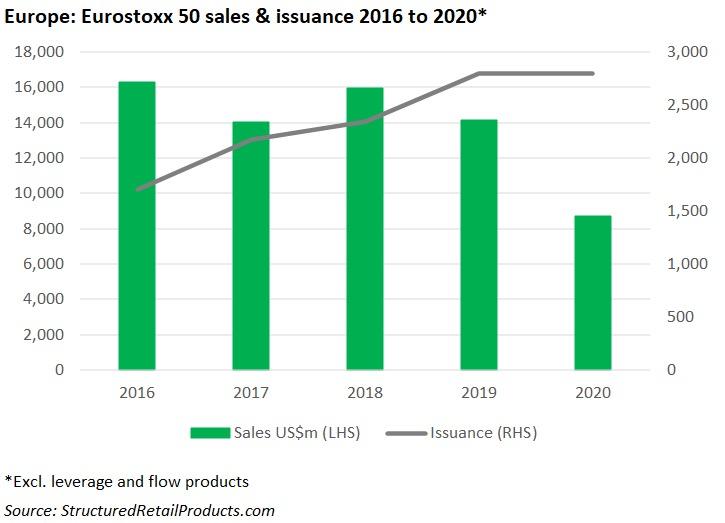
A few issuers approached by SRP confirmed that their issuance of Eurostoxx 50-linked products has been reduced as it is not economical anymore.
“[We] have to find alternatives on autocalls to make more money,” said another senior source at a Belgian bank.
Spain’s BBVA is one of the issuers reducing “significantly the number of products linked to the Eurostoxx 50 – not because a lack of demand but because of our strategy to diversify the underlying pool around our issuance activities”.
“Our book which had a high exposure to the Eurostoxx 50 is now a much more diversified with other indices and stocks,” Juan Ramon Dominguex, European head of equity structured products sales at BBVA, told SRP. “Worst of baskets continue to dominate against single underlyings. However, in markets were there is more activity around single underlyings such as France there is tendency to use other indices such as ESG or decrement which we have also incorporated within our trading capabilities and will help us increase our market share.”
A Qontigo/Stoxx spokesperson told SRP that the extreme market moves and volatility in 2020 have “caused a lot of products to knock and will have driven re-striking en masse”.
“Given that, it is unsurprising that volumes in mass-listed products are down YoY,” he said, adding that ESG issuance in structured products is quite small compared to the total market, and is unlikely to explain the drop in volumes.
“The YoY growth trend in ESG structured products is strong although the overall number remains quite small compared to the total market,” he added.
According to a senior French banker, issuers have shifted their attention from the Eurostoxx 50 to other underlyings out of necessity – decrement indices have become the obvious choice to address the dividend risk associated to the Eurostoxx 50. SRP data shows that decrement indices have racked up €2.1bn since January, a 14% increase.
“Our issuance on single indices remain as usual but we have shifted our attention to ESG, decrement and ESG/decrement where our issuance has increased significantly,” he said, adding that US underlyings, fund-linked products and QIS have also driven some of the activity away from the Eurostoxx 50 this year.
According to the Belgian banker, decrement indices, ESG and thematic indices are showing “the way forward as they offer a better risk-return proposition”.
Despite the significant drop the Eurostoxx 50 remains the most featured underlying across European markets with more than 11,000 products worth an estimated €2.2 billion marketed to date.
LACK OF DIRECTION
The uncertainty surrounding Europe and the lack of direction since the pandemic is also having a negative impact on the Eurostoxx 50 and accelerating the trend.
19 www.structuredretailproducts.com SRPInsight FEATURE
Europe: Eurostoxx 50 sales & issuance 2016-2020*
Qontigo: top 10 indices by issuance Q1 2021 vs Q1 2020*
“If you look at the US and other countries they have been very vocal in relation to the support measures they will implement and this is having a positive impact in the real economy and the capital markets – a lot of the money being pumped will end up invested on the S&P500 index, and investors remain quite bullish on this index,” said Danny Skutelis, chief executive at Arx Financial Engineering in Dubai.
“Some of the most recognisable traits of the Eurostoxx 50 were its relative stability and moderate growth as well as its high dividends - those dividends used to subsidise other structures. That is no longer the case. The pandemic has diminished the ability of European companies to pay high dividends. The Eurostoxx 50 is also very leveraged and it is losing its appeal very rapidly in this environment.”
A number of markets sources told SRP this figure is much higher when taking into account the institutional marketinstitutional and professional investors are also looking for alternatives and voting with their feet.
“We see inflows of capital coming from traditional underlying assets such as the Eurostoxx 50 into other areas of the world and other assets,” said Skutelis. “The investment landscape is changing, and significant amounts of capital are being herded into new assets like cryptocurrencies that are very easily available and accessible to investors.
“We also see increasing capital going through AMCs as
they are providing access to other non-bankable assets like real state, freight & shipping, or movies. Investors are increasingly using AMCs to restructure and diversify their exposures. Even offshore IFAs that were doing five-year Eurostoxx 50 notes last year have moved to other underlyings and wrappers. I don’t see any positive momentum for the Eurostoxx 50 – our expectation is that the number of products linked to this index will continue to decrease.”
Stefan Wagner, head of business development at AMC platform Vestr and former global head of structuring at Citi, noted that licensing fees on the Eurostoxx 50 are high while more, cheaper, maybe even better alternatives, are available”.
“The pricing [on the Eurostoxx 50] for yield products is not as attractive as it used to be,” he said. “Many autocallables linked to the Eurostoxx 50 didn’t get called [last year] and with that no need for re-investment” which has resulted in little to no new money coming into the structured products market.
The number of AMCs issued is going up particularly as issuers allow for small size starting at €1m which gives more flexibility than a structured product linked to an index.
“Investor are starting to use alternative indices with fixed dividend points or yield,” said Wagner. “[These provide] better pricing and less risk to hedge for investment banks.”
20 www.structuredretailproducts.com FEATURE
Index Q1 2021 Q1 2020 Dax 182,245 219,474 Dax/Xdax 24,752 0 Eurostoxx 50 13,420 25,258 Eurostoxx Banks 1,556 646 Vstoxx 148 408 Eurostoxx 50 Quanto EUR/KRW Adjusted Index 144 91 Stoxx Europe 600 Automobiles & Parts 74 56 Stoxx Europe 600 Basic Resources 68 65 Stoxx Europe 600 Oil & Gas Index 65 84 Eurostoxx Select Dividend 30 48 277
*Public offers, including flow and leverage products Source: StructuredRetailProducts.com

21 www.structuredretailproducts.com SRPInsight FEATURE Market cap indices: top 10 by market share 2016-2020 Index Issuance Sales US$m Market share (%) Eurostoxx 50 18,656 100,763.97 23.67 S&P 500 14,778 85,685.04 20.13 CSI 300 Index 3,480 72,170.98 16.95 Kospi 200 8,665 49,110.38 11.54 Nikkei 225 940 27,525.38 6.47 CSI Smallcap 500 3,716 17,136.40 4.03 Russell 2000 2,465 10,898.50 2.56 FTSE 100 1,860 8,052.07 1.89 Hang Seng China Enterprises Index 524 7,510.14 1.76 S&P/TSX Composite Index Banks 1,000 5,649.76 1.33 Others 17,307 41,181.92 9.67 Grand Total 73,391 425,684.54 100.00 Source: StructuredRetailProducts.com DOWNLOAD THE 2021 MEDIA PACK NOW >>
Buy-side view: we’ve taken a different route with our prop decrement strategies
Market participants who considered ‘black swan’ events almost improbable witnessed the March 2020 crash first-hand.

SRP caught up with Jean-Pierre Ané, head of financial engineering at Kepler Cheuvreux, to discuss the challenges faced by the buy-side in 2020 and how the firm navigated this challenging period. The industry had to deal simultaneously with market volatility and internal reorganisation to keep business going (WFH), to make sure risks – both sanitary and market related –were being managed effectively.
The crash caught everyone off-guard - issuers, distributors, investors, according to Ané (pictured), but it was impressive to see that the impact was relatively limited considering the level of disruption at an internal organisational level.
As shockwaves were felt across asset classes, the similarities with the collapse of Lehman Brothers in 2008 became apparent.
“The conversations with our clients went well beyond market considerations (such as potential triggers of market disruption like geopolitics) because everything was amplified by the lockdown and the market crash,” says Ané. “But 2020 was not a financial crisis, as we saw swift commitments across the board from governments to investors – the panic sell-off was limited,
We use decrement indices when they offer value
the markets rebounded fairly quickly, and product providers and investors kept providing liquidity.”
How did your clients react in the aftermath of the market crash?
Jean-Pierre Ané: The first week after the crash was worrisome because it felt like there was no captain in the ship and it was difficult to predict were the market would go. We witnessed losses above 10% close to close in Europe for the first time in history.
On the other hand, the volatility spike presented lifetime investment opportunities – there were several names (Nike, Airbus, Total…) with low default probability that presented very appealing entry points for investors, through either credit or equity tailor-made products. We noticed increased volumes immediately after the market crash as central banks injected liquidity. This reassured investors.
In the second half of 2020, many investors sat in the side-lines to see where the market was going since the direction was not obvious and some clients expected a double dip - which never happened.
22 www.structuredretailproducts.com FEATURE
What kind of products offered good value to investors in 2020?
Jean-Pierre Ané: The market crash opened opportunities to capitalise on some types of structures. For us, credit and fixed income became cornerstones as they presented great opportunities – when governments show support, investors know they can be quite safe on the credit side.
Income products on credit default were more appealing than equities given the limited visibility. Looking at treasuries and cash flows in combination with state support, it seemed an obvious proposition and some entities offered very good opportunities for investors (spread v default). However, market timing was short, and we witnessed equity inflows right after credit inflows.
What challenges did you find in 2020 to respond to your client needs?
Jean-Pierre Ané: The main issue with credit during such a period is the market timing: it is hard to get it right. Straight after the crash, when governments moved to support companies, investors had a 15-day window to be opportunistic. Spreads were tightening everyday – those who reacted quickly were able to monetise these opportunities with CLNs, capital guaranteed or bond repackaging.
It was less obvious on the equity side as the government support did not have the same impact on stock performance. The companies were credit safe but could deliver very poor equity performance.
A good example was the French banks – every French investor was confident none of these banks would default during the crisis… But none of them would have expected banks to rebound!
However, towards the middle of the year, single equity names attracted investors (autocalls on Total) as the chances of a performance pick-up were higher – we saw demand even for insurance companies and banks as the 40-50% downside barrier in autocalls provided a comfortable safety net for investors.
Do you agree that 2020 was the year of decrement in the structured products market?
Jean-Pierre Ané: There are thousands of products linked to the Eurostoxx 50 where traders make assumptions on the future dividends to provide competitive prices. The dividend crisis –followed by uncertainty - exacerbated issuers reluctance to be aggressive with standard public indices.
This was all decrement indices needed to breakthrough as they provided increased visibility on dividends. Such indices make it easier for traders managed their books – hence increasing banks’ aggressivity.
We use decrement indices when we think they offer value to investors, but one needs to be very careful about the type of indices you select.
Kepler Cheuvreux has taken a slightly different path as most investment banks are now developing their own custom decrement indices. Our dedicated engineering team is building proprietary decrement strategies and opening them up to different counterparties, since we share the rules and methodology with issuers (CACIB, MS, BNP). The added value for our clients is that they can obtain three prices for one index instead of one price for three different indices, improving transparency.
We work with Solactive since they are efficient and flexible, and can meet our needs.
AMCs did also gain traction and increased visibility in 2020. Is Keppler using this wrapper to meet investor demand for new thematic exposure?
Jean-Pierre Ané: 2020 was a successful year for actively managed certificates [AMCs] and the momentum continues. The trend became almost structural – we are issuing AMCs a daily basis compared to a couple per month one year ago.
It is a very suitable instrument to access new themes and underlying strategies across asset classes. It was a key growth area for Kepler Cheuvreux since it enabled us to bring the key themes of our 100 analysts on the market in a timely manner.
AMCs welcome all underlyingss and can reallocate on a weekly basis. For instance, a portfolio is composed of UK stocks corresponding to a Brexit theme. Once the portfolio is up 15%, stocks can be sold and replaced with another thematic portfolio (real estate, leisure, travel) in one trading day. Investors can gain exposure to short term themes such as the reopening of the economy, combined with long-term trends (Tech, ESG…)
AMCs make it extremely easy to be exposed to key themes and rebalance them whenever the investor thinks is right. We see them as a revolution for the industry as they are making the underlying exposure much more flexible and dynamic.
They are even suitable for speculative investors – clients included crypto currencies for instance. On the other hand, conservative investors may use an AMC as a defensive long-term hedge.
Do you think there is scope for AMCs to become mainstream?
Jean-Pierre Ané: A few banks are already active and display a strong offering (UBS, JPM). Such a wrapper comes with operational challenges and risks. Digital tools and automated processes are needed to offer proper execution and follow-up.
New players emerge in the form of fintech firm offering services around AMCs and other banks are also seeking to enter to capture some market share. Internally, AMCs help de-risk trading books and lower the cost of hedging, as they can also be issued via SPVs which are less connected to the trading book.
We feel it is just the beginning – the impressive growth rate of this wrapper indicates that they will continue to expand.
23 www.structuredretailproducts.com SRPInsight FEATURE
The Dow, from average to index
As the US benchmark celebrated 125 years, SRP looked at how the index has fared as underlying for structured products over the years.
On 26 May 2021, the Dow Jones Industrial Average celebrated its 125th anniversary. It was created by Charles Dow, a journalist who cofounded Dow Jones & Co., publisher of The Wall Street Journal. Dow’s partner, Edward Jones, also has his name attached to the average. The Dow was initially made up of 12 stocks, including a leather-maker, a steel provider, and a sugar producer. It was calculated by adding up the prices of the component stocks and dividing the sum by a divisor.
Nowadays, the index is a price-weighted measure of 30 US blue-chip companies. It covers all industries except transportation and utilities.
“The users of the Dow used to be a smoke-filled backroom of money managers and now it includes the average person on the street, who can research and invest literally on a cell-phone,” said Howard Silverblatt, S&P Dow Jones Indices
senior index analyst, speaking on the Essential Podcast on the occasion of the DJIA’s 125th birthday.
“The Dow is a snapshot of the economy. By looking at key selected publicly traded issues, it gives you a higher-level view of how things are going in a market. It is simple and straightforward,” Silverblatt said.
The index has been an important part of the SRP US database since its launch in 2005. Back then, 45 products worth US$175m were linked to the index, including offerings from long forgotten entities such as Piscataqua Savings Bank, Henry County Bank, and Farmers & Merchants Bank.
Since then, the evolution of issuance and sales volumes for products tied to the index has seen a fairly constant upward trend, despite dips in 2009 and 2012 – reflecting the market conditions at the time. Structures tied to the Dow peaked in 2020, when 4,120 products collected a combined US$8.7
Dow Jones Industrial Average: US sales & issuance between 2005 and 2021*

*As of 8 June 2021
Source: StructuredRetailProducts.com
24 www.structuredretailproducts.com FEATURE
billion, an increase of 184% by issuance and 158% by sales volume compared to the previous year. 2021 also promises to be a good year, with sales volumes having already reached 50% of last year’s total as of 8 June (from 1,508 products).
In Europe, the DJIA has been a top 10 underlying for listed flow- and leverage certificates. Like in the US, there has been a steady growth in issuance. Starting at just 176 products in 2005, issuance increased to 115,182 products in 2020. In 2021 to date, there have already been 49,777 products that were issued via, among others, BNP Paribas, Citi, Goldman Sachs, J.P. Morgan, Société Générale and UBS.
Originally the Dow was an average. “You added up and you divided. In 1928 it became an index when the Dow 20 became the Dow 30,” said Silverblatt.
It is comprised of a small group of stocks and the membership does not change that often.
“Historically turnover has not been high. It did go from 12, to 20 to 30, but over a 40-year period there were only eight changes,” said Silverblatt.
“One hundred and twenty-five years ago it was all about industrials, and now it is more about technology and communication,” he said. As of 28 May 2021, companies from the information technology sector represent 20.8% of the index, followed by industrials (17.6%), healthcare (17.1%) and financials (16.3%).
“It is hard to say what it will be like in 25 years, much less 125-years, but shorter term, a lot easier to say the economy is reopening to whatever the new normal will be.
“The index needs to reflect what the market is doing and in order to do that it needs to change its membership. Since the market is changing so quick, I expect membership change to increase,” Silverblatt said.
DJIA: price v size, a rare choice in the structured products market
The Dow Jones Industrial Average (DJIA) is one of the most well-known financial indices and this year is celebrating 125 years as it was created all the way back in 1896.
Following our coverage of the 125 Anniversary of the US benchmark which looked at how the index has fared as underlying for structured products over the years, in this article we look at the main characteristics of the index and its appeal as an underlying for structured products.
The DJIA was the second index that Charles Dow created, the first being a “railroad” index (which was later generalised to transportation). At that time railroads and the industrial sector were considered the two dominant drivers of the economy.
The index has remained popular and widely followed ever since and it is still quoted prominently in the financial press and data feeds. Financial indices are taken for granted now but back at its inception over a century ago it was a ground-breaking concept. Charles Dow
The DJIA is a price weighted index
was a journalist by profession rather than a trader or fund manager and so the motivation for the creation of an index was as a simple way to demonstrate the market direction. This would provide news and data to the investment and business community. The index was initially composed of 12 stocks and this was increased to 30 in 1928 to reflect expansion in the US economy.
The DJIA is a price weighted index
which today is an extremely rare choice with the only other major index to use this calculation method being the Nikkei 225 in Japan. A price weighted index takes the sum of the individual stock prices within the index and divides by a pre-determined ratio. This ratio is recalculated every time there is a change to the index composition or a corporate action to maintain the index value across this event. By contrast, a market capitalisation index takes the largest
25 www.structuredretailproducts.com SRPInsight
FEATURE
stocks by market value applies weights in proportion. A third way of calculating an index is to equally weight stocks according to a certain schedule. This is a more sophisticated treatment which will be examined in a future column on SRP. In today’s world, the choice of a price weighted index seems very strange, where the contribution to the index of a company is not determined by its size but the price of the individual share. We should not be overly critical of this methodology which has to be set within the context of being created so long ago. This was a world of limited and very slowly disseminated news, information and data. Financial analysis techniques were in their infancy and mainstream automation of any kind decades away. By contrast the capitalisation weighted index – the S&P Index, was not created until 1923 and only expanded to include 500 stocks in 1957.
WEIGHTING ISSUES
A price weighted index is sensitive to the initial stock price level of a company and is also affected when a company undergoes a corporate action. This was shown up in dramatic fashion last year when Apple underwent its 4 for 1 share split. Apple has had a history of relatively frequent share splits in recent years in order to keep its (unit) share price roughly constant, a happy problem caused through its stellar rise over twenty years on the way to becoming the world’s largest company. Such a corporate
action is purely cosmetic in terms of the company’s fundamentals and the share price simply adjusts to keep the company total market value constant. This in turn means that its weighting in a market capitalisation (or equally weighted) index is unchanged, and it would also cause no impact for a fund manager with a holding in the company.
However, for the DJIA under the rules of a price weighted index the proportion in Apple stock was immediately divided by four. This now means that Apple is demoted to the bottom portion of the index and UnitedHealth and Goldman Sachs are the highest constituents in the DJIA, despite their relatively modest placings in the S&P 500.
This episode caused much comment in the industry and the index committee felt the need to bring in another technology company (Salesforce) in order to restore some sector balance to the index. Exercising their discretion in this somewhat arbitrary manner to compensate for the price weighting mechanism further highlights the drawback of this famous index.
Most observers might assume that the main difference between the DJIA and the S&P 500 is the fact that the DJIA is only composed of 30 stocks. Since these stocks are so dominant in the US economy their characteristics are usually similar. The DJIA is generally a little more volatile (20.2% versus 19.3% for the last
five years historical volatility) but the two indices are very highly correlated, 97% over that same period. The S&P 500 has shown rather better performance however at 16.4% versus 15.0%, due in part to the higher technology sector weighting it has.
The US structured product market has seen significant growth in recent years and in 2020 issuance of products linked to the DJIA totalled US$8.7 billion, an increase of over 150% on the previous year, according to SRP data.
While the DJIA remains a less common choice to the wider market index represented by the S&P 500 it is still a popular choice for those seeking exposure to some of the most well-known companies in the US and who trust the brand of such a long standing index. Additionally, the slightly higher volatility (and sometimes the dividend yield) makes the DJIA an attractive choice for capital at risk products. Products were issued by many market participants in 2020 and include choices such as autocallables, callables and contingent coupon notes. The DJIA is a less common choice for ETF issuers compared to the giant funds that track the S&P 500.
On the back of a healthy US structured product market we can expect the usage of DJIA in structured products and the wider market to remain buoyant as interest in this landmark index remains strong.
The DJIA remains a popular choice to get exposure to well-known US companies
26 www.structuredretailproducts.com NEWS | EUROPEFEATURE
Leonteq: ‘beauty contest’ model fits Mifid best execution requirements
The Swiss structured products specialist firm is taking RFQ to the next level as the focus shifts to the buy-side.

Following the launch of Quote, Leonteq’s fully automated click ’n’ trade module within its LynQs platform, SRP spoke to Kevin Dayot (pictured), executive director and head of digital platform services at Leonteq Securities, about the new functionality, how has the platform’s market evolved over the last few years and why the focus on the buy-side is helping to expand the market and the use of structured products.
The launch of the Quote module is part of Leonteq’s efforts to offer a ‘unique one-stop-shop’ for structured products.
The LynQs initiative started in 2018 and was based on an indepth analysis of the firm’s strengths and market trends, which ultimately defined its digital strategy and positioning.
“One of the trends back then was the need to cater for small ticket issuance sizes as the market has moved from CHF5m tickets to CHF100k tickets,” says Dayot. “This meant that issuers had to automate the structured products issuance. At the same time, private banks, wealth managers and professional investors faced operational challenges as they needed the same technological capacity as the issuers to be
2,000 individuals use the different LynQs modules
able to manage and process the numerous structured notes booked on their systems.”
The firm’s answer to that challenge was to build a multi-issuer platform focused on the needs of the buy-side as most of the developments around price discovery, documentation etc had been initially targeted at the sell-side.
“We basically reversed the process and put all the tools that had been developed for the sell-side into the hands of the buy-side,” says Dayot.
The first modules launched via LynQs added life cycle management functionalities as well as investment ideas to the existing offering.
“Today, we have almost 2,000 individuals using the different LynQs modules,” says Dayot.
What is new about Quote?
Kevin Dayot: Our new Quote module is a fully automated click ’n’ trade platform which offers pricing and execution from more
27 www.structuredretailproducts.com SRPInsight FEATURE | Q&A
than 10 issuers of structured investment solutions. Quote is basically enhancing and ultimately replacing the Constructor application that we launched back in 2009.
In Constructor, the client had to select the individual issuer to get pricing whereas now for each request the client receives quotes from all issuers. In the current regulatory context of Mifid (in Europe) and FIDLEG (in Switzerland), this ‘beauty contest’ model supports professional investors in complying with requirements such as best execution.
With the launch of Quote, the LynQs platform becomes a true ‘one-stop-shop’ for pre-trade investment ideas, pricing and execution and post-trade services such as documentation, portfolio allocation, secondary market and life cycle management.
We think this is the best way to empower financial intermediaries and promote the value of structured products. The different modules help relationship managers and private bankers to understand how these products fit in their clients’ portfolios and fine tune exposures.
How would you rate the performance of LynQs after two years since it was rolled out?
Kevin Dayot: LynQs is a digital marketplace that enables professional investors to access products issued by Leonteq and its white labelling partners (such as Raiffeisen and EFG). We are also connecting additional issuers (such as Barclays) via APIs to our platform. This means that from a client perspective everything is centrally available on one single platform as they can price, execute and place any structured product in their portfolio.
At private banks, orders can be allocated or split among several relationship managers which supports the structured product specialists in their day-to-day activities. Furthermore, relationship managers can create and manage anonymised investors’ portfolios to analyse the risk exposures and the performance.
Constructor was comparable to other single issuer platforms in the market which catered to sophisticated users who had to be experts in structured products. With LynQs we are democratising the pricing and trading of these products and empower buy-side institutions to customise their own pricing needs. And the functionalities of LynQs are well suited for relationship managers of private banks and independent asset managers who don’t trade structured products every day.
Several structured products platforms have shifted the focus towards the buy-side. Is this a sign that single-issuer platforms are not really fit for purpose?
Kevin Dayot: The original sell-side single-issuer approach has limitations as private banks on the buy-side must price
a structure through the different platforms and therefore input the same product parameters several times. We don’t think that is an efficient process, so we have developed a single-entry point concept. With Mifid 2 coming into effect which requires the buy-side to show best execution it was the obvious route to go.
Single-dealer platforms have dominated the market for many years, but we think that the landscape is changing, and it will be difficult for those players to retain certain portion of their market share going forward. That is why some of the main issuers started to develop their own public APIs to connect and transact products via multi-issuer platforms.
How would you describe the evolution of this part of the market?
Kevin Dayot: Over the last few years we have also seen several independent distributors develop their own platforms but the issue with most of these platforms is that they’re not really open architecture in the sense that you can only buy products from those issuers the distributors are connected to.
To address this market reality, LynQs was developed with an open architecture concept which does not force clients to trade the products through our platform. Clients can transact bilaterally with any issuers they wish, while our platform will process the uploaded term sheet, show secondary market prices and enables lifecycle management on indicative terms. LynQs is prioritising the distribution activity over the manufacturing activity, which puts our clients in command.
We have recently seen new outfits coming to the European market that are closer to what LynQs offers which confirms we are on the right path.
Most of the developments in the platform’s space seem to be focused on the front-office. Are there any other areas that need attention in relation to the automation of processes? What next for LynQs?
Kevin Dayot: One of our priorities going forward will be focused on the interaction of our platform with the systems of private banks and the improvement of processes so that private bankers can focus on serving their clients as opposed to doing administrative tasks. By bringing the automation to private banks the platform opens new opportunities for the front-office but there is still work to do in the back-office.
Therefore, we have worked with our partner EFG and developed the EFG Alpha platform which has fully automated the processing of transactions in dual currency deposits within EFG’s core banking system. We want to support our other private banking partners to improve their level of automation front-to-back so everything that is available on LynQs can be accessed and integrated via a public API in their internal banking systems.
28 www.structuredretailproducts.com FEATURE | Q&A
SocGen responds to ESG demand in SK with new fund-linked, FX structures
Both trades mark the bank’s foray into the burgeoning market of ESG alternative investments in South Korea.
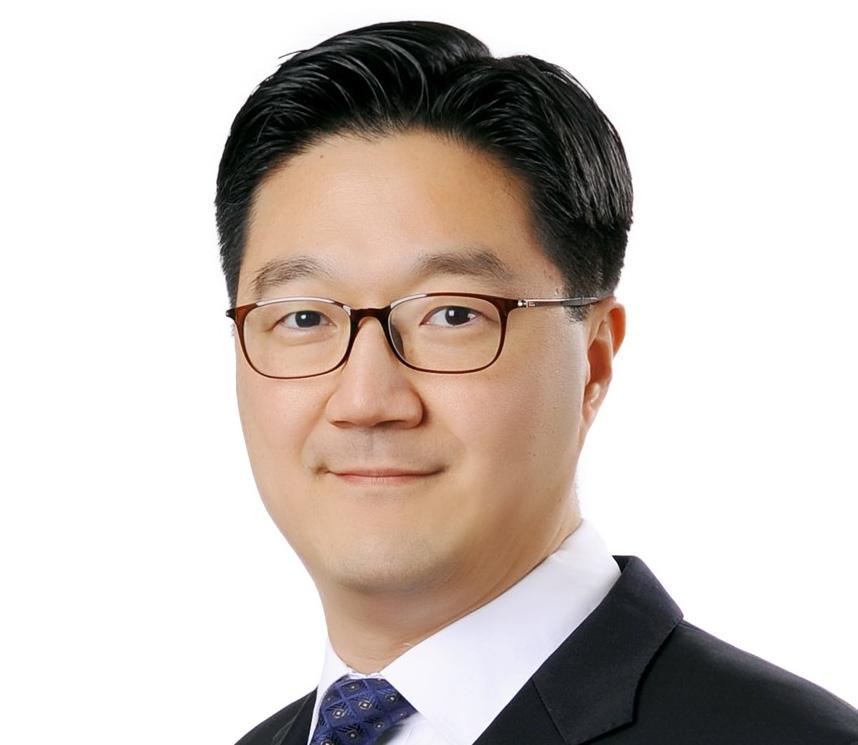
Société Genérale has issued an ESG fund-linked swap for a local securities house as well as FX forwards integrated with a sustainability-related KPI for a corporate client. With a notional of KRW20 billion (US$17.8m), the swap tracks the performance of an ESG fixed income mutual fund - the Allianz Euro Credit SRI, which allows the counterparty’s client (a pension fund) to gain upside participation when the underlying appreciates while retaining full principal through a derivative-linked bond (DLB).
The five-year swap was traded in February. All transactions were settled in US dollars converted from Korean won payments at a pre-agreed USD/KRW fixing.
“ESG fund-linked products are very new in Korea, but it’s a global trend and we aim to broaden the types of ESG offerings here,” Eric Kang (pictured), CEO and head of global markets sales at SG Securities Korea, told SRP. “The Allianz Euro Credit SRI is the best matched as its effective ESG guidelines in place enables the client to gain ESG exposure easily and the sectors involved look good to the securities house.”
The subsidiary of Société Générale CIB receives the 91-day Korean Certificate of Deposit rate plus a spread pa. on a
ESG
fund-linked products are very new in Korea
quarterly basis from the counterparty after paying a one-time upfront fee at a transaction cost of 0.5% on the effective date (TD + 4 days). At maturity, it will make a one-time payment based on the performance of the volatility target fund.
The French bank started to explore ESG fixed income mutual funds in late 2020 and selected the Allianz Euro Credit SRI fund as it enables the manufacturer to provide the highest participation rate with a floor of zero percent.
The underlying fund aims for long-term capital growth by investing in investment grade rated debt securities of OECD or EU bond markets denominated in EUR in accordance with the bank’s sustainable and responsible investment strategy (SRI Strategy).
In the scope of Asia, Société Générale has also traded principal-protected notes and warrants on ESG fixed income mutual funds including the Pimco GIS Global Bond ESG fund and RobecoSAM SDG Credit Income fund since 2020.
FORWARDS WITH KPI
In addition, the investment bank sold its first sustainability-linked derivatives (SLD) to a corporate in Korea in 2020, which are forwards of EUR/LPN (Polish zloty) with a total €40m notional.
29 www.structuredretailproducts.com SRPInsight FEATURE | Q&A
They comprised of eight transactions with a maturity between 1.5 and 2.5 years.
The derivatives incorporated an ESG-related key performance indicator (KPI), under which the client - a Korea-listed engineering and construction multinational - commits to achieving a greater percentage of assets that pursue the ESG certifications evaluated by a group of ten bodies based on Korea’s G-seed (Green Standard for Energy and Environmental Design) system. The FX rate is adjusted accordingly based on the KPI.
“[The FX forwards] are for hedging a EUR-denominated loan, whose proceeds are used to build a factory in Poland,” said Tae-Shin Park (right), head of global markets Korea at Société Générale Seoul Branch.
The project meets ESG criteria under certain European and Polish guidelines because the components and parts are imported from European firms that are viewed ESG-friendly, according to Park.
SRP learnt that the same client has also bought forwards of EUR/ PLN with a shorter tenor from Standard Chartered Bank Korea, which was embedded with another ESG KPI, so its EUR/LPN exposure is hedged throughout the loan period with different counterparties.
INDUSTRYWIDE
“Several Korean construction companies, which are building ESG-related facilities, have showed interest to us in hedging their FX or interest rate exposure through SLD,” Park said. “They typically choose instruments like FX forwards, cross currency swap and interest rate swap, but SLD enables them to save the cost by achieving the KPI.”
Park sees the need applicable to the wider construction industry in Korea as companies tend to face pressure due to their resource consumption and impact on climate change.
“It’s possible that they won’t get funded if not becoming more ESG-friendly in light of the funding requirements set up by many financial institutions,” said Park. “And their projects usually drag long with long-term loans in the books, which need to be properly hedged.”
In 2019, the French bank promised to “progressively reduce to zero” its exposure the thermal coal sector in 2030 for companies with mining or power thermal coal assets located in EU or OECD countries and in 2040 elsewhere.
COUNTRYWIDE
The Korean government has considerably stepped up its effort in bolstering ESG investment in the post-Covid 19 era and introduced in July 2020 the national strategy ‘green new deal’ focusing on renewable energy, green infrastructure and industrial sector with a budget of KRW73.4 trillion.
Under the governmental support, sovereign wealth funds including Korea Investment Corporation (KIC) and National Pension Service (NPS) have set up their internal guidelines for ESG investing in the driving seat of the ESG market. Meanwhile, insurance companies and pension funds have shown growing interest in ESG alternative investments with an emphasis on coupon or yield, according to Kang.
“Non-bank investors in Korea are known to be falling behind in this global movement,” he said. “They do perceive ESG as a powerful trend and prefer ESG assets over non-ESG assets. Yet, many investors still lack formal guidelines on how to evaluate the assets. It takes more time to verify the capability of generating access return for ESG investments.”
The French bank has not traded on ESG indices in Korea where several local securities houses are making attempts in the ESG-related equity-linked securities (ELS) market through the S&P 500 ESG index, Eurostoxx 50 ESG index or Eurostoxx 50 Low Carbon EUR Price index from April. These autocallable products have together accumulated around KRW25.2 billion, representing a tiny part of the whole ELS market worth at KRW10.3 trillion during the same period (7 April to 18 June 2021), SRP database shows.
“Compared with institutional investors who may have investment guidelines in place, retail investors typically focus on yield, which awaits to be proved in the ESG structured product market,” said Kang. “It’s now harder to promote new underlyings like ESG indices for retail given the increased regulatory restrictions.”
On the vanilla side, ESG or green bonds have gained strong traction in Korea. Their issuance rose to US$23 billion in 2020 from US$1.1 billion the year before, bringing the total volume to US$42 billion, according to Kang.
“A noticeable trend in recent issuance is that, a rising number of non-financial corporates are coming to the market for ESG funding,” he said.
Many investors lack guidelines on how to evaluate the assets
30 www.structuredretailproducts.com FEATURE | Q&A
Simon: any unfamiliar tool will take time for advisors to adopt
The US multi-dealer platform is expanding its coverage of the indexed annuities market amid a renewed surge of interest during 2020.

The main objective of Simon is to allow advisers to better understand the investment options within the product to help them more efficiently figure out how to allocate the client’s money, according to Scott Stolz (pictured), head of insurance solutions for Simon Markets, who joined from Raymond James earlier this year.
“We actually started with indexed and structured annuities on the platform because those are the ones within annuity products that are most similar to structured investments,” he said.
Structured annuities can be thought of as multiple structured notes within one annuity contract. The Simon interface strives to de-mystify the many factors that might confuse advisers who are not well-versed on such an investment.
“There are so many choices out there and advisers have to figure out which index, crediting strategy, risk appetite, term, and living benefit their clients are comfortable with,” said Stoltz. “All of these things are what they need to understand.”
The main challenges that advisers face when looking at structured annuities as well as any sort of risk managed
Structured
annuities
can be thought of as multiple structured notes
solution include matching up the volume of risk they are willing to expose to a client, and deciphering how much protection is needed.
“Everything is a tradeoff and I’m going to get different levels of risk versus reward, whether it be equities, international equities or commodities or real estate,” said Stolz. “All of this goes together in the decision. I don’t know how an adviser would be able to effectively and efficiently make these decisions on their own.”
One of the issues advisers face is that insurance companies are required by state insurance law to verify that advisers are adequately trained on the relevant products which makes the platform a relevant tool to meet regulatory requirements.
“The industry has interpreted that to mean that you have to take a test on any product before you can recommend it.”
The platform also features a learning centre with modules on topics covering structured annuities as well as defined outcome exchange-traded funds (ETFs) and structured notes.
“The [platform] is where all the products and analytics are, so that is where I would go when I’ve completed all the
31 www.structuredretailproducts.com SRPInsight FEATURE | Q&A
The most obvious benefit of a structured annuity is that you get a tax deferral
training,” said Stolz. “I would begin to look at individual products to understand better how they work and how they performed in the past, along with how they will likely perform in the future.”
PORTFOLIO MANAGEMENT
The life cycle portal is the third vital piece on the platform as it gives the adviser the ability to review their entire book of annuity business.
“The platform extracts the information and file feeds from annuity distributors and stores it all in one place,” said Stolz. “For the first time, an adviser can see every policy that they have and that they’re the agent of record on, as well as information on each policy.”
According to Stolz, some of the reasons behind the increase in structured annuity sales include the fallen interest rates
and the trend of clients looking for ways to obtain a decent return with some downside protection.
“The most obvious benefit of a structured annuity is that you get a tax deferral but whether you’re looking at structured annuity versus a structured ETF or a structured note, it’s a longer hold. We assume that it’s a buy and hold for the client and once they are in the annuity side, they’re probably going to stay there until they decide they need the money,” he said.
With technology being at the forefront of the platform’s innovation, any unfamiliar tool being introduced within the annuity space, will take some time for advisers to adopt, according to Stolz.
“We are definitely getting there and achieving more adoption all the time on the structured investment side. It is about making sure that wholesalers of the insurance companies we work with understand how to take advantage of what we have to offer.”
Simon Markets adds new index-annuity carrier to insurtech platform
Simon Annuities and Insurance Services, the insurtech module within Simon Markets multi-issuer structured products platform, has announced the addition of Nationwide as the latest carrier to join its pool of indexed annuity providers.
Under the agreement a number of Nationwide annuities will be made available in Simon’s Marketplace including the Nationwide Peak 10 - the latest in the firm’s suite of Peak FIAs, which feature the J.P. Morgan Cycle Index and AllianceBernstein Growth and Value Index, and the Nationwide Defined Protection Annuity (DPA) an index annuity offering access to various index strategies including the S&P 500 Price Index, MSCI EAFE, NYSE Zebra Edge, and JP Morgan Mozaic II Index.
According to Nationwide’s sixth annual Advisor Authority study demand for annuities is ‘growing as retirees today seek solutions to incorporate predicable streams of guaranteed income and protect their portfolios against market risk’.
Craig Hawley, head of annuity distribution at Nationwide, said the agreement with Simon is part of the firm’s efforts to incorporate ‘smart technology into the financial professional’s day-to-day workflow’.
32 www.structuredretailproducts.com FEATURE | Q&A
Product wrap: Eavest offers access to SGX decrement index in France
In this month’s wrap, we look at a selection of structured products with strike dates between 13 June and 17 July 2021.
EUROPE
Deutsche Bank collected €10.1m with World Technology Note (90) 2028 in Belgium. The seven-year, Luxembourg listed medium-term note (MTN) participates 100% in the MSCI World Technology Select ESG Top 50 5% Decrement Index, which tracks the performance of 50 technology stocks with improved ESG characteristics while applying a synthetic dividend of five percent pa. The minimum capital return is 90%. Morgan Stanley is the issuer. A distribution fee and a structuring fee of maximum 4.25% each is included in the issue price of 102%. Priips summary risk indicator (SRI): two out of seven.
Cirdan Capital Management sold Maxicoupon Phoenix Autocall to retail investors in Italy. The five-year certificate is issued on the paper of SmartETN, a special purpose vehicle registered in Ireland. It is linked to worst-of a basket
comprising the shares of Macy’s, Nio, Sunrun and United States Steel. If on 20 June 2022, all shares close at or above 50% of their initial level, the investor receives a coupon of 21%. The following months, a memory coupon of 0.50% is payable providing the worst performing share closes at or above 70% of its starting price. The certificates are listed on Euro TLX. Priips summary risk indicator (SRI): five out of seven.
French financial adviser Eavest distributed Euro Semestro Juin 2021, a 10-year MTN on the iEdge France 50 EW NTR Decrement Index. Every six-months, the performance of the index is measured. If it closes above 92.5% of its starting level, the product knocks out, paying a coupon of three percent for each semester elapsed. The index is administered, calculated and published by SGX Index Edge while Natixis acts as an index advisor. Natixis Structured Issuance is the product manufacturer. The note has a one-off entrance fee of 1.10% and is listed in Luxembourg. Priips SRI: four out of seven.
Europe: top 10 issuer group by issuance - 13 June to 17 July 2021*
Deka Bank
Landesbank Baden-Württemberg
Vontobel
Leonteq
Société Générale
BNP Paribas
EFG Group
Landesbank Hessen-Thüringen
Cornèr Bank
Goldman Sachs
33 www.structuredretailproducts.com SRPInsight PRODUCT WRAP
0 50 100 150 200 250 300 350 400
*Excluding flow- and leverage products Source: StructuredRetailProducts.com
Sparkasse Bergkamen-Bönen launched Express-Zertifikat Pro 07/2025 in Germany. The four-year investment is linked to the MSCI World Climate Change ESG Select 4.5% Decrement EUR Index. It redeems early (annually) if the index closes at or above 100%, 95% or 90% of its initial level after one, two or three years, respectively. If the index has not fallen below 67% of its initial level, the nominal invested is returned. Deka Bank is the issuer. A one-off entrance fee of 4.58% applies. The certificate is listed in Frankfurt. Priips SRI: four out of seven.
Alexandria collaborated with Credit Suisse for the launch of Kuponki Autocall in Finland. The MTN has a maturity of maximum six years and is tied to two shares from the pharmaceuticals and biotechnology sector: Orion and Neste Oil. It pays a memory coupon of 10% pa providing both shares close at or above 75% of their respective initial level on the valuation date. The product is listed on the Luxembourg Stock Exchange. Priips SRI: six out of seven.
Strukturinvest offered retail investors in Sweden access to the Solactive Europe & US Top Pharmaceuticals 2020 AR 5% Index via 2466 Indexbevis Läkemedel Platå. The MTN has a tenor of five-years. Capital is protected by BNPP if the index closes at or above 75% of its initial level on 16 July 2026. In that case, the product offers the higher of 100% of the index performance (uncapped) and 525% of the index performance capped at 20%. The final index level is calculated as the average of 13 monthly readings. A one-off entry cost of 2.36% applies. Priips SRI: four out of seven.
NORTH AMERICA
Scotiabank issued series 11F of its BNS Autocallable Deposit Notes in Canada. It has a seven-year tenor. If the closing level of the underlying Solactive Equal Weight Canada Banks 5% AR Index on 24 June 2025 is at least equal to its initial level, the product is redeemed automatically for a fixed return of 19%. At maturity, the product offers minimum 100% capital return plus 100% participation in the index.
UBS sold US$10.1m worth of Trigger Autocallable Contingent Yield Notes on the common stock of Palantir Technologies in the US. It has a three-year maturity and offers a quarterly coupon of 11.35% pa, if the share closes at or above US$13.69, which is 50% of its initial level, on the observation date. There is an underwriting discount of 2.5% and the estimated initial value as of the trade date is US$967.30.
Also in the US, Morgan Stanley collected US$5.2m with its Market-Linked Notes on the MAP Trend Index. The capital protected product has a 5.5-year tenor and participates 120% in the rise of the index, which was established by Morgan Stanley on 7 March 2017. It employs a rules-based quantitative strategy that combines a risk-weighted approach to portfolio construction with a momentum-based, or trend-following, asset allocation methodology to construct a notional portfolio. Selected dealers and their financial advisors will receive a structuring fee of up to US$4 and a distribution fee of US$6 for each note. The estimated value is set at US$974 per note.
34 www.structuredretailproducts.com
0 50 100 150 200 250 300 350 400 Toronto Dominion Bank HSBC RBC Morgan Stanley Barclays BMO Financial Goldman Sachs Citi J.P. Morgan UBS
flow- and leverage
Source: StructuredRetailProducts.com PRODUCT WRAP
Americas: top 10 issuer group by issuance - 13 June to 17 July 2021* *Excluding
products
Asia Pacific: top 10 issuer group by issuance - 13 June to 17 July 2021*
Samsung Securities HSBC
Shinhan Financial Group
KB Financial Group
Mirae Asset
Hana Financial Group
*Excluding flow- and leverage products
LATIN AMERICA
XP Investimentos distributed XP Urânio in Brazil. The five-year structured deposit is tied to the Global X Uranium ETF, which tracks the price and yield performance of the Solactive Global Uranium & Nuclear Components Total Return Index. At maturity, it offers 100% capital return plus 100% participation in the positive performance of the fund, capped at an overall maximum return of [250..290]%.
MIDDLE EAST & AFRICA
Absa is targeting the US dollar denominated Global Growth Basket 24 at investors in South Africa. The five-year MTN participates 100% in the Credit Suisse Global Equity MultiFactor 10% Risk Control (ER) Index, subject to six-months backend averaging and a minimum capital return of 95%. It can be accessed via an offshore linked endowment policy only (Momentum wrapped). A financial adviser fee of 2.875% is integrated in the structure. Insurer, platform and/or custody fees need to be funded separately.
ASIA PACIFIC
Source: StructuredRetailProducts.com
Tokai Tokyo Securities achieved sales of JPY700m (US$6.2m) with KI M20240703 in Japan. The product offers a fixed coupon of 5.54% pa for the first quarter. Every subsequent quarter a coupon of the same amount is paid if the share of Yamaha Motors closes at or above 80% of its initial price. At maturity, if the share has never fallen below 55% of its initial price throughout the tenor, it will return 100% of initial capital. Otherwise, it will be redeemed by physical delivery of the underlying share instead. Svensk Exportkredit is the issuer and Barclays Bank acts as the derivatives manufacturer.
China Guangfa Bank issued CNY Structured Deposit S8 XJXSLG6374 in China. The one-year product is linked to the Huatai Cycle Selected S1 Strategy Index, which has a risk control mechanism and was originally targeted at the bank’s institutional clients. The product features the shark fin payout. If the final index level is at or above 104.7% of its initial level, the product offers 100% capital return plus a coupon of 5.1% pa.
Hana Data Securities accumulated sales of KRW22.6 billion (US$19.9m) with DLB 5095 in South Korea. The product has a maturity of 20-years and is linked to the constant maturity swap rate (CMS).
35 www.structuredretailproducts.com SRPInsight PRODUCT WRAP 0 200 400 600 800 1,000 1,200 1,400 1,600 1,800 2,000 Korea Investment Nonghyup
Meritz Securities Bank of China
People Moves















































SG gets new global markets activities line-up
Société Générale (SG) has promoted Sylvain Cartier and Alexandre Fleury (pictured) as co-heads of global markets activities.

They replace Jean-François Grégoire who has parted ways with the French bank to ‘pursue new projects outside’ the bank in the context of the implementation of its new strategic roadmap in global banking and investor solutions.
Cartier was appointed head of credit, fixed income & currencies in 2019, while Fleury joined SG as head of equities and equity derivatives in Q2 2018. They will retain their existing roles, and report to Slawomir Krupa, head of global banking and investor solutions, going forward. They also become members of SG’s management committee.

















Grégoire oversaw the repositioning of the product range after the impacts of the crisis in 2020 as well as the integration of Commerzbank’s exchange-traded investment solutions after the acquisition of the German bank’s Equity Markets and Commodities’ (EMC) business in 2019.
He was put in charge of the business unit as head of global markets in February 2019, after a disastrous performance of the bank’s global markets division in the last quarter of 2018 which triggered a downsizing exercise and a review of its ‘less profitable’ fixed-income and currencies business.
Grégoire joined SG in 1996 as an equity derivatives trader in Paris. Between 2001 and 2009, he was head of equity derivatives trading for Asia-Pacific and then for the USA. In 2009, he was appointed head of us trading based in New York and since 2012 he has been global head of trading based in Paris. Grégoire was appointed deputy group chief risk officer in 2016.
‘This new management structure of the market division, tighter and under my direct supervision, will allow to strengthen dayto-day cooperation, alignment and agility within global markets, which is essential for the proper execution of our strategic initiatives and the added value we provide to clients,’ said Krupa.
Fleury joined SG from Bank of America-Merrill Lynch (BofA) where he was global head of exotics equity derivatives trading and equity structured finance. Prior to BofA, Fleury was head of European exotic equity trading at Morgan Stanley in London. Before joining Morgan Stanley, Fleury was head of exotic equity trading Europe, Middle East and Africa (Emea) at SG.
As head of credit, fixed income & currencies, Cartier has been in charge with refocusing the bank’s flow activities
36 www.structuredretailproducts.com
PEOPLE MOVES
(cash and flow derivatives), and to further develop investment and financing solutions to make rates, credit and currencies activities more profitable.
Cartier has been based in New-York acting as head of global markets for Americas since November 2017 and as head of fixed income and currencies for Americas since 2014. Previously based in Hong-Kong, Cartier was head of trading for fixed income and currencies in Asia Pacific since 2012 and acted as head of treasury for SG in Asia. He joined SG in 1993 as a trader.

DEPARTURES
Three senior equity derivative bankers at Société Générale’s investment bank in London have been put on gardening leave as they part ways with the bank.
Delphine Leblond-Limpalaër (pictured), head of equity derivatives & solutions, UK institutions, since 2019, is understood to be joining Morgan Stanley. She joined the French bank as a proprietary trader and was latterly head of UK hedge fund equity derivative sales, in 2007, from VHC Partners Hedge Fund where she was an event driven analyst for two years. During her time at SG, Leblond-Limpalaër held several director-level roles in global engineering and strategy, and equity derivative sales.
Michael Bayley is understood to be moving to BNP Paribas. He joined the French bank in 2012 as director, cross asset solutions, UK institutions covering quantitative investment strategies (QIS), risk premia, Solvency II solutions, cross asset structured products and equity derivatives for UK pension funds, insurers, asset managers and discretionary fund managers. He was promoted to his current role as head of equity derivatives and solutions for UK institutions in 2019. Prior to that, he worked as a director, equity derivative sales at the Royal Bank of Scotland (RBS) following the UK bank’s acquisition of ABN Amro, where he was an equity derivative salesman for five years.
Anthony Pike, a vice president in equity derivatives and cross asset sales, is set to join Barclays in a similar position. He joined the French bank’s equity derivatives sales team in 2015 after three years at from J.P. Morgan where he was part of the US bank’s equities derivatives group.
SRP has also confirmed the departures of Haibiao Huang and Stanislav Gnap, a director and associate, respectively, on the quantitative investment strategies (strats) team.
The departures are linked to the 20% reduction of the bonus pool at the French bank’s investment bank in 2020 following heavy trading losses in its equity derivatives business which triggered the de-risking of its books and the redesign of its product range to decrease the sensitivity of its revenues to market dislocations.
SRP understands the roles have been mostly filled and the headcount remains roughly the same. SG declined to comment.
Citi rejigs Apac client coverage

The US bank has split its client coverage across three business lines covering all asset classes for flow and non-flow business in Apac. The moves comes as the cross asset solution team sees gross volume of structured products on equity and hybrid underlyings in the region rise 3.1x in 2020 compared with 2019.
Jennifer Wong, head of Apac private banks, will focus on Asean and private banks. Young Yoon, head of Korea sales, will cover North Asia while Victor Cheng from multi asset group will oversee Citi private bank, the US bank’s internal client channel.
In addition, Citi will overlay each pillar to define low touch or transactional driven activities versus high touch or project driven activities, according to an internal memo signed by Cyrille Troublaiewitch (pictured) and Sue Lee, Asia co-heads of equity derivatives sales and multi asset group on 10 June and seen by SRP.
A newly-formed sales team led by Cheng, who is responsible for ‘integrating the flow activities across the business lines to realise synergies,’ will be in the charge of the bank’s low touch activities.
The high touch sales team will focus on developing initiatives, which comprise non-flow offerings around payoff innovation, Citi investment strategies and thematic indices, as well as automated platform partnerships.
“In 2020, Citi cross asset solutions team’s third-party businesses globally had grown 82% year-on-year,” a spokesperson told SRP. “We also brought added value solutions such as actively managed certificates [AMCs] and our bespoke indices for our clients, adapted to their specific market context.
The new model will enable the bank to better identify new wealth management trends, across asset classes and product range, according to the spokesperson.
The decision will benefit the operation model of the crossasset solutions team, which delivers Citi’s institutional capital markets capabilities and services to private wealth and financial intermediaries, said the spokesperson.
The reorganisation is not related to Citi’s recent decision to exit its consumer banking business in 13 Apac markets including Australia, Bahrain, China, India, Indonesia, Korea, Malaysia, the Philippines, Poland, Russia, Taiwan, Thailand and Vietnam.
Following the withdrawal, Citi’s institutional client group will continue to operate in these markets while its consumer banking franchise in Asia and Emea will solely derive from four wealth hubs - Singapore, Hong Kong SAR, UAE and London.
37 www.structuredretailproducts.com SRPInsight PEOPLE MOVES
Luma
US structured products platform has hired Keith Burger as its new national sales director for annuities amid its ongoing expansion into the structured annuity space.
Burger joins Luma from AIG where he spent over two decades as senior vice president, national sales manager. He spearheaded a team of external wholesalers and achieved record-setting annuity sales.
Earlier at AIG, Burger assumed the role of divisional vice president and external wholesaler and honed his perspective on the needs of financial advisors.
While at Luma, Burger will lead the platform’s rapid expansion across multiple distribution channels and oversee the firm’s strategy in delivering Luma’s offering to financial professionals who are seeking an increase in the efficiency and effectiveness of annuity marketplace transactions.
Association for Financial Markets in Europe
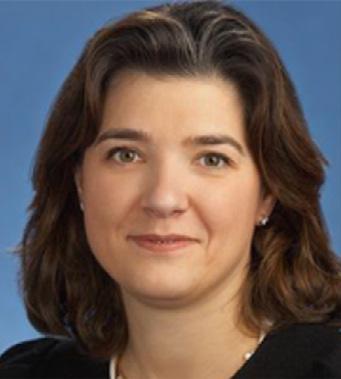
The Association for Financial Markets in Europe (AFME) has announced that Thalia Chryssikou, head of global sales strats & structuring at Goldman Sachs, has been appointed as chair of the board. Chryssikou (pictured) takes over from Michael Cole-Fontayn who has been a member of the AFME board since 2011 and served as its chair between September 2015 and June 2021.
Chryssikou has been responsible for Goldman’s sales strategies (strats) and structuring unit globally across equities and fixed income currencies and commodities (FICC) since 2019, alongside Stacy Selig, who parted ways with the bank earlier this year. She now solely heads the division which houses the bank’s quantitative and technology teams, and its Marquee data, analytics and execution platform.
AFME has a key role to play in helping to shape European financial regulation - Thalia Chryssikou
Chryssikou was appointed to the role in 2017, after being promoted with Stefan Bollinger as co-heads of global sales strats to replace Guy Saidenberg, the former global head of securities division sales strats and structuring, in London. Selig replaced Bollinger in early 2019 after Goldman reshuffled its systematic trading strategies team with the latter shifting to the bank’s private wealth franchise.
Chryssikou had previously managed the European macro structuring and sales strats team, in London.
‘The enormous potential for transformation of the European economy through digitalisation and decarbonisation will require unprecedented levels of investment and finance,’ said Chryssiko. ‘AFME has a key role to play in helping to shape European financial regulation to promote deep and integrated capital markets to serve the needs of companies and investors in this task.’
HSBC Global Private Banking
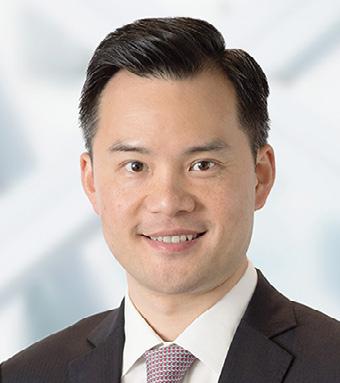
HSBC has appointed Jackie Mau as head of global private banking, mainland China, HSBC, effective from 1 August 2021.
Mau (right) will focus on building products, platforms and service capabilities, growing the bank’s market share and expanding its presence in mainland China ‘to serve the increasingly sophisticated HNW/UHNW clients in the world’s second biggest wealth market’.
Based in Shanghai, Mau will report to Richard Li, executive vice president and head of wealth and personal banking, China on an entity basis and functionally to Siew Meng Tan, regional head of global private banking in Asia.
With more than 20 years of extensive financial industry experience, Mau has held a variety of frontline and management roles in global banking and markets at HSBC Hong Kong, Southern China and Thailand.
Since re-joining HSBC in 2016 as part of the global private banking team, he has been a driving force in the design of a UHNW strategy for HSBC Private Banking in Asia, ‘driving strong business growth and improved client connectivity for this important segment,’ according to the bank.
He was appointed to his current role as regional head of ultra-high net worth (UHNW) in late 2019 as HSBC Private Banking renewed its focus on the UHNW segment as part of its growth ambitions in the region. Mau has over 20 years’ financial markets experience.
Since joining HSBC in 2003, he has held several senior client-facing roles across investment banking and private banking in both Hong Kong and Thailand. Mau was appointed as co-head of investment services and product solutions (ISPS), Asia Pacific for HSBC Private Banking, in September 2018. Prior to that, he was regional head of investment counselling, Asia Pacific.
38 www.structuredretailproducts.com
PEOPLE MOVES
SRP NEW LIFECYCLE MANAGEMENT PORTAL
SRP has entered into a joint venture with FVC to design a lifecycle management portal with a single sign-on, to be powered by SRP database. Technical specifications allowing eligible SRP subscribers to access the portal with their existing SRP access credentials to be announced during the SRP Americas event in September.
The purpose of the lifecycling portal is to provide a complete structured product selection, monitoring and analysis system. The portal will have different use cases depending on client and jurisdiction. Its primary function is as a fully featured structured product management tool for advisers, brokers and smaller buy-side firms such as discretionary fund managers and family offices.
Initially the valuation service will cover live products on the US database across the most popular payoff types such as Autocall, Reverse Convertible, Leveraged Upside, Participation, Digital and Twin Win across a large selection of underlyings, issuers and maturities covering thousands of live products. This new valuation service will then be rolled out to other markets globally in 2022.
e:
p:
FOR MORE INFORMATION PLEASE CONTACT: Reihaneh Fakhari | Business Development Director
Reihaneh@structuredretailproducts.com
+44 (0)20 7779 8220
+44 (0)79 8075 6761 Raul Enciso-Portoles | Head of Sales, Americas e: raul@structuredretailproducts.com p: +44 (0)20 7779 8222 m: +44 (0)79 7146 4509 1. DESIGN PRODUCT WEALTH MANAGERS BACK OFFICE BLOOMBERG SIX SIS SGX EUWAX CONNEXOR ISSUERS 2. REQUEST FOR OFFER 3. ACQUIRE QUOTES 4. MAKE DEAL 5. PUBLISH 6. MONITOR EVENT 7. REPAY FULL INVESTMENT CYCLE
m:
KEY BENEFITS OF THE LIFECYCLE MANAGEMENT PORTAL INCLUDE:
Direct structured product governance tool for financial advisers and brokers. Typically, there are three layers to usage for a medium to large company – firm wide compliance, by adviser and by individual end client.
Dynamic product reports: Reports for each individual structured product in the universe will be updated and produced on a regular basis (at least weekly). These will be based on the successful adviser facing Structured Edge report concept that has been used by thousands of advisers in the UK for the last twenty years. And more…
www.structuredretailproducts.com


























 Image: Rosie Steggles/Unsplash
Image: Rosie Steggles/Unsplash























































